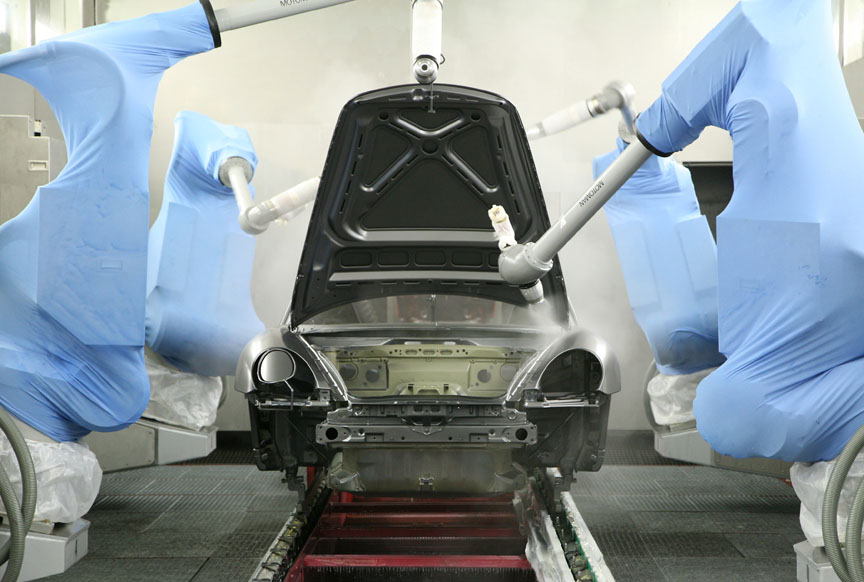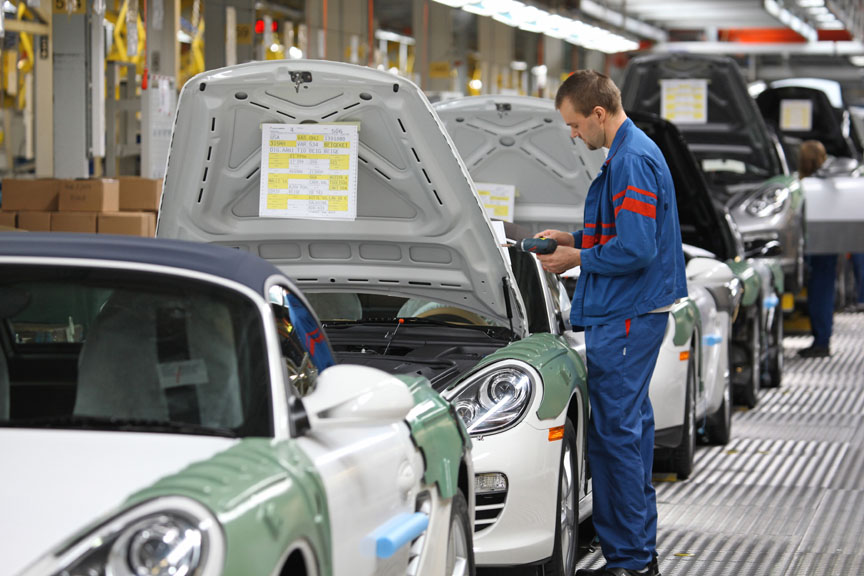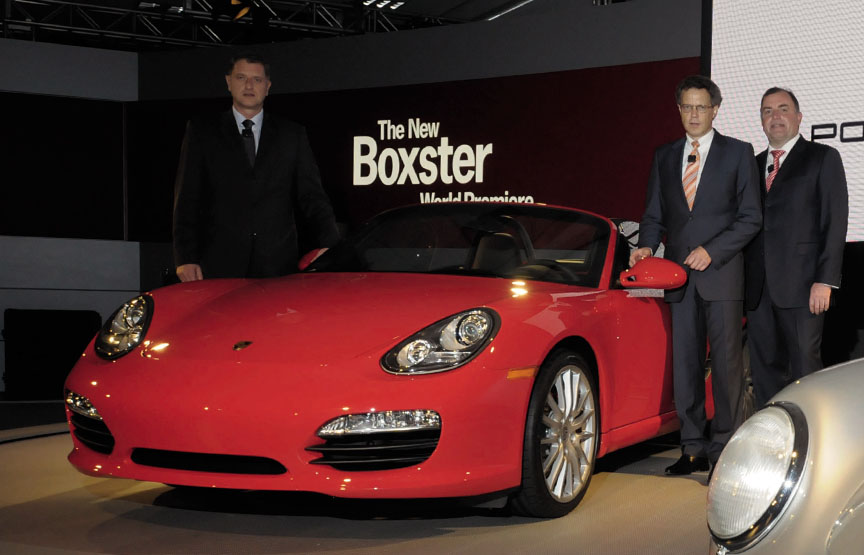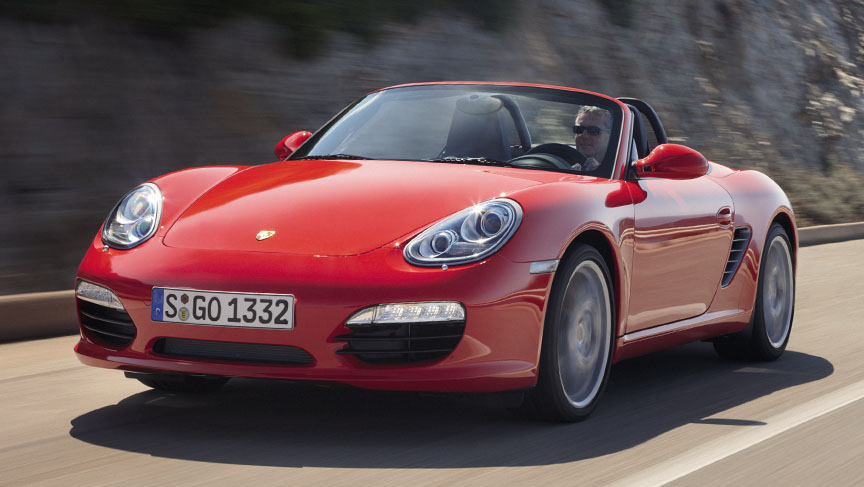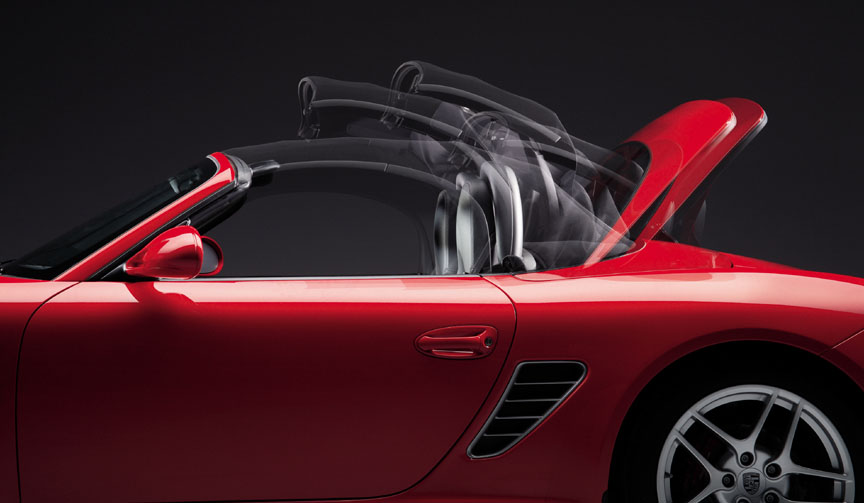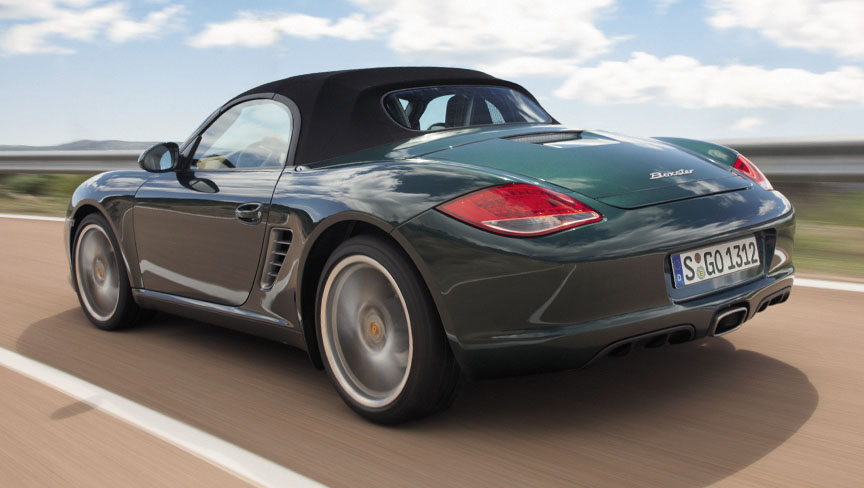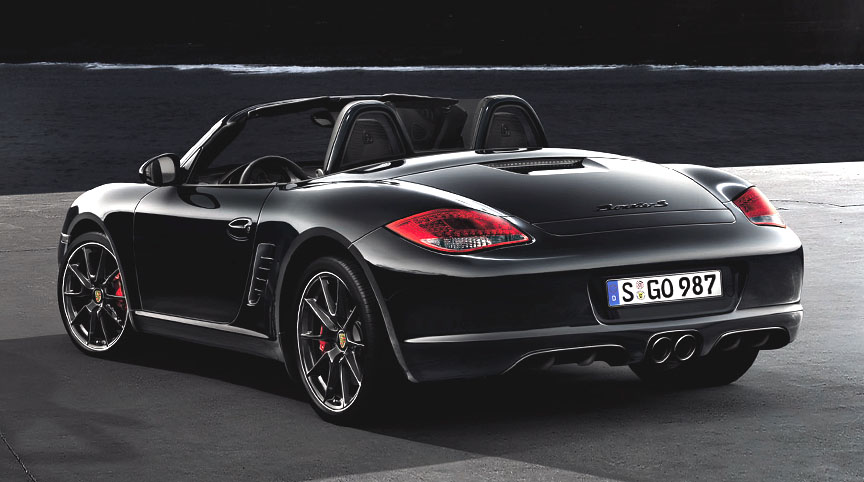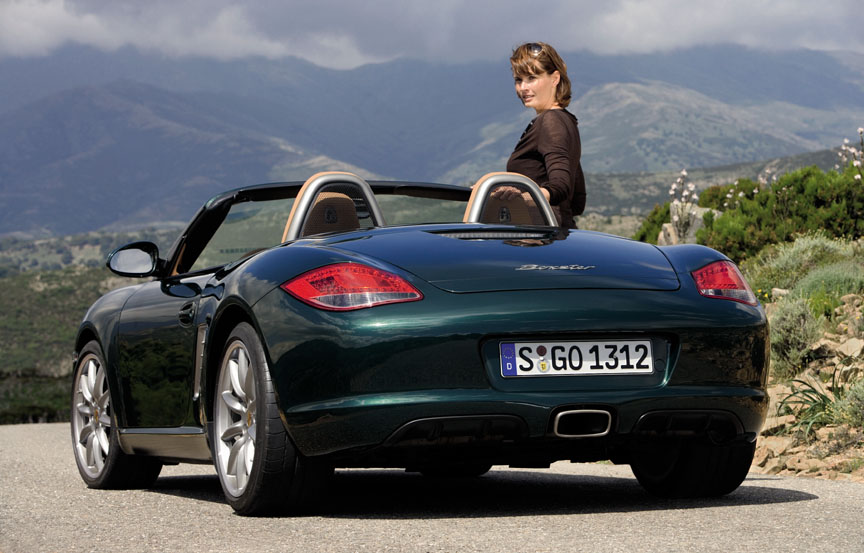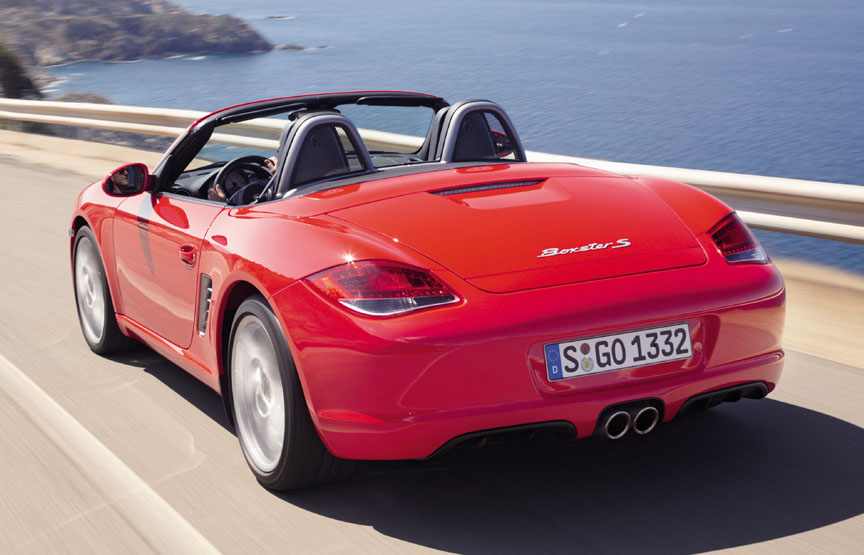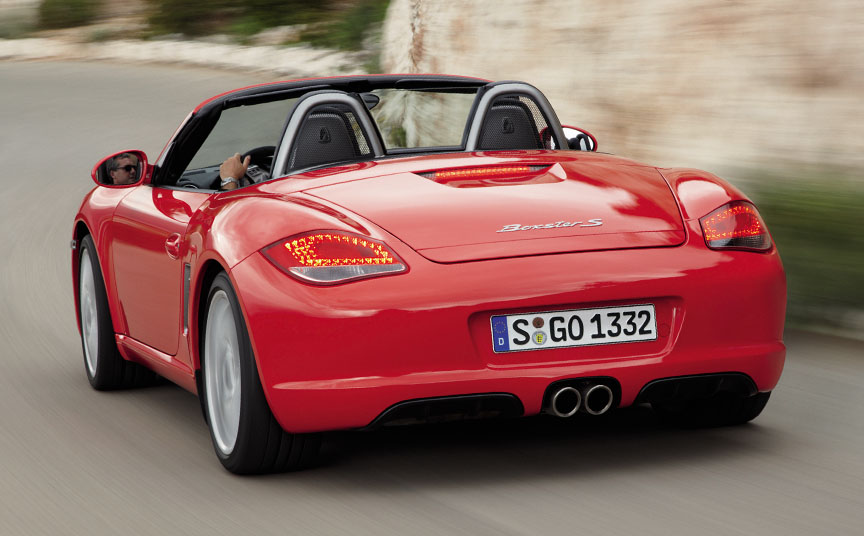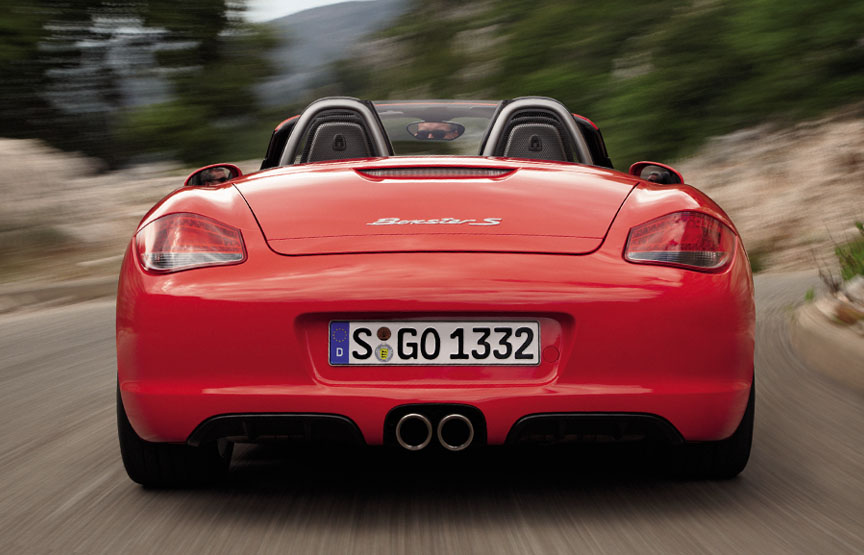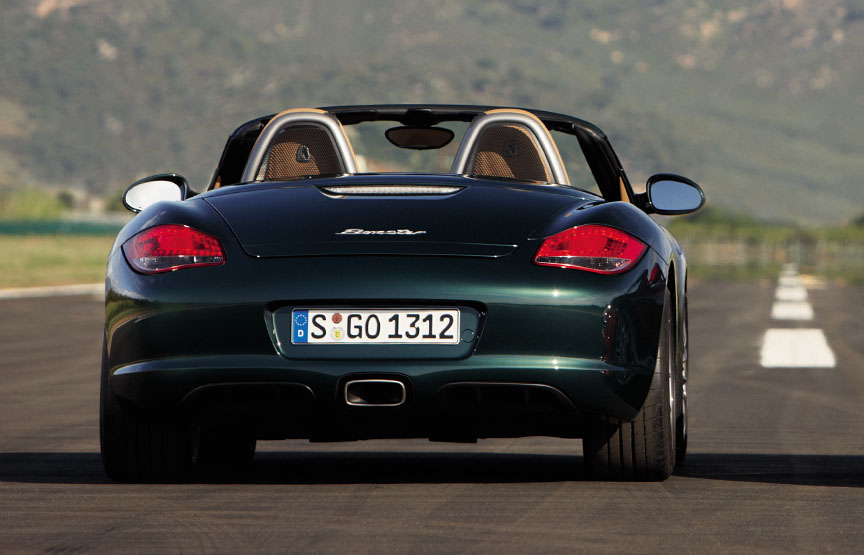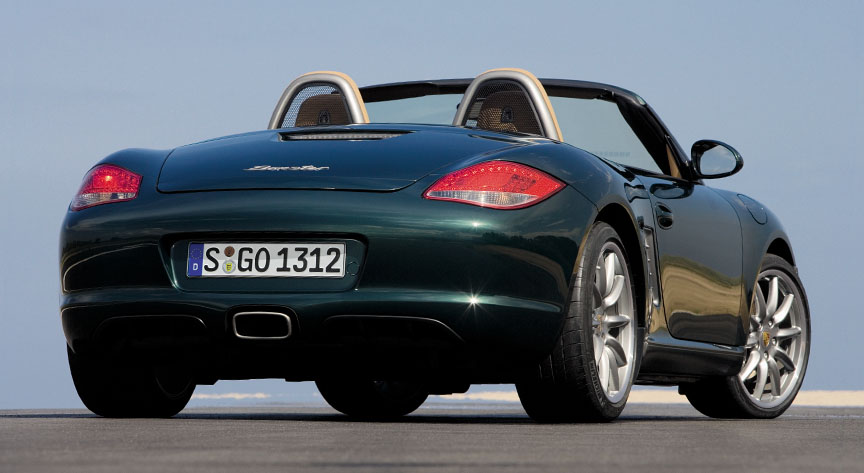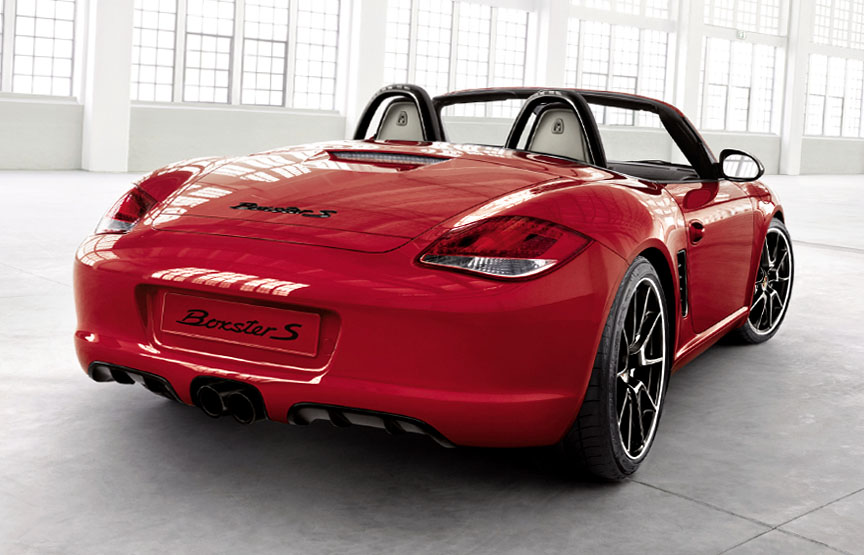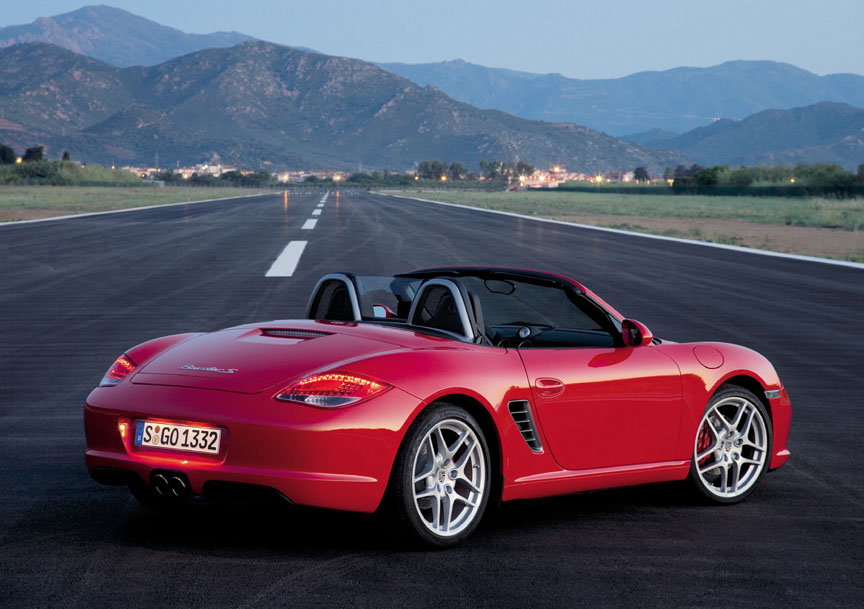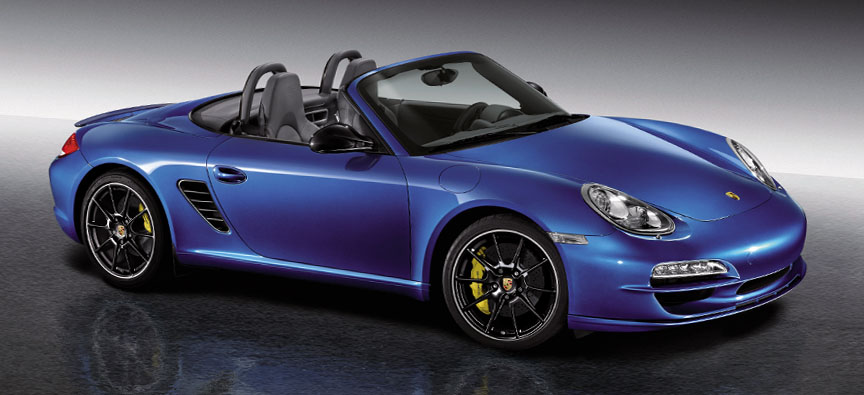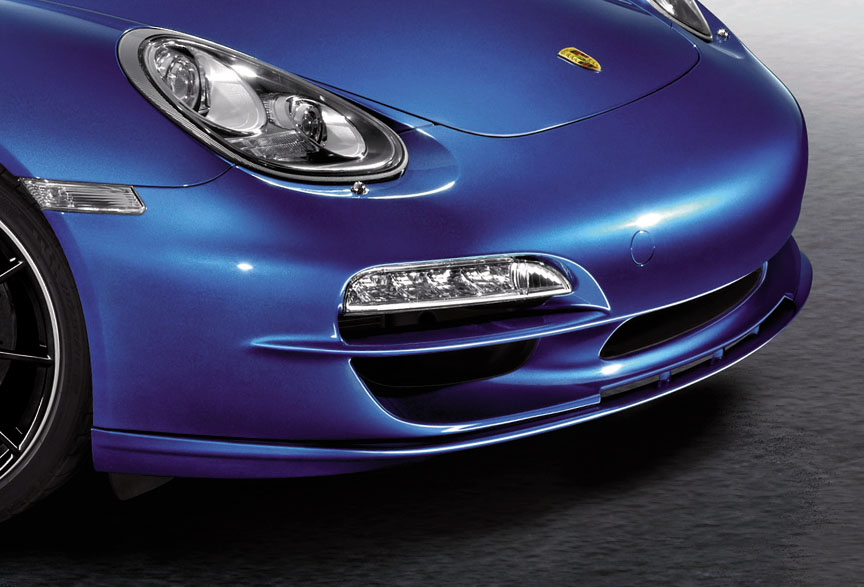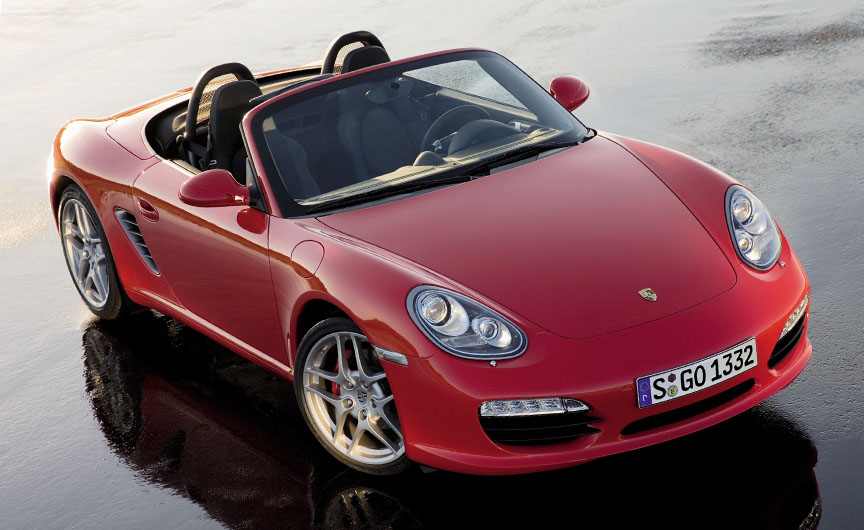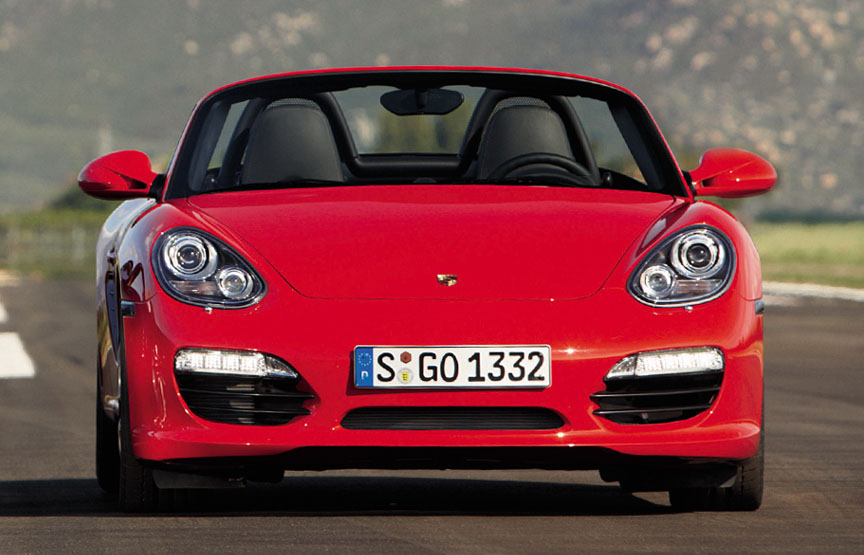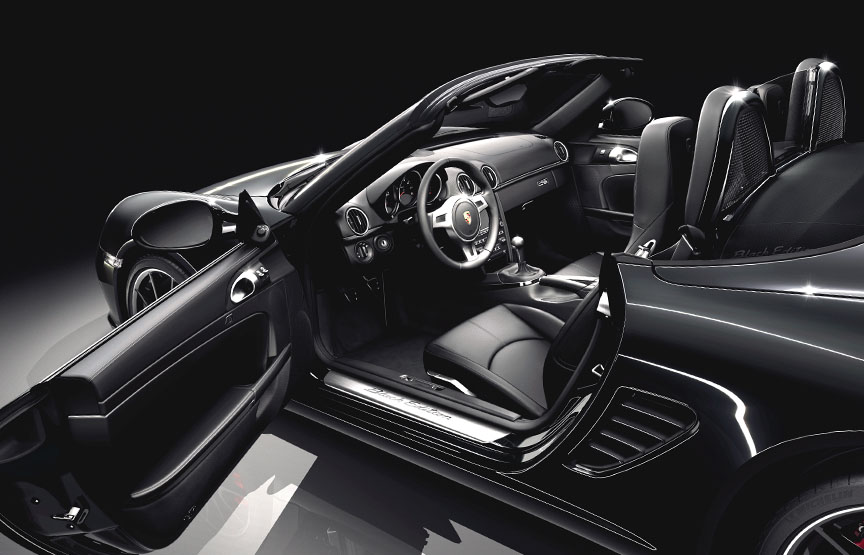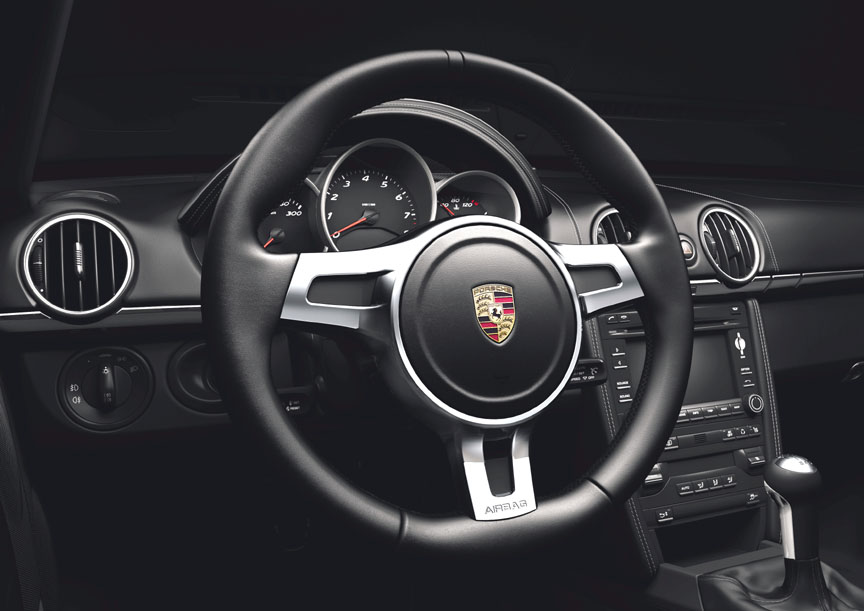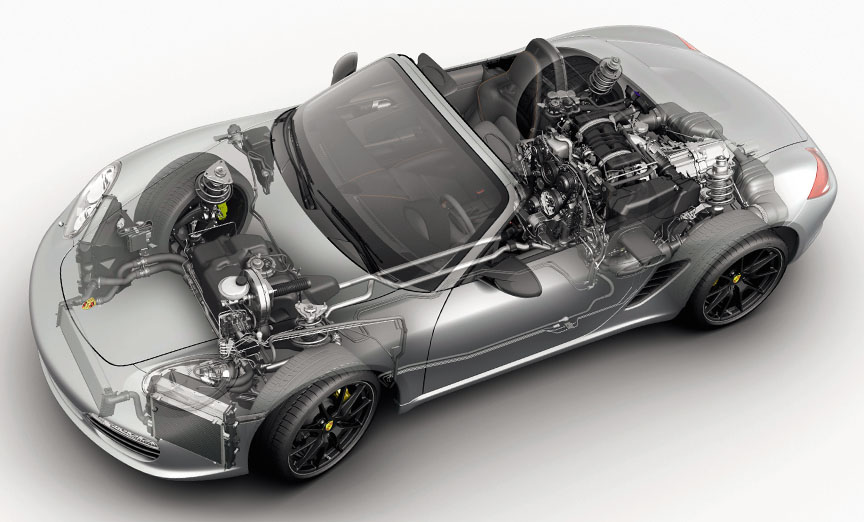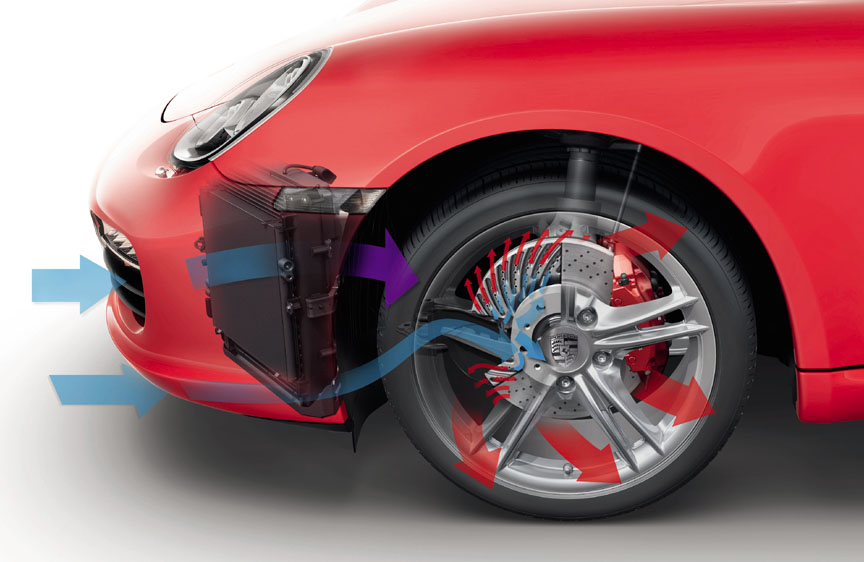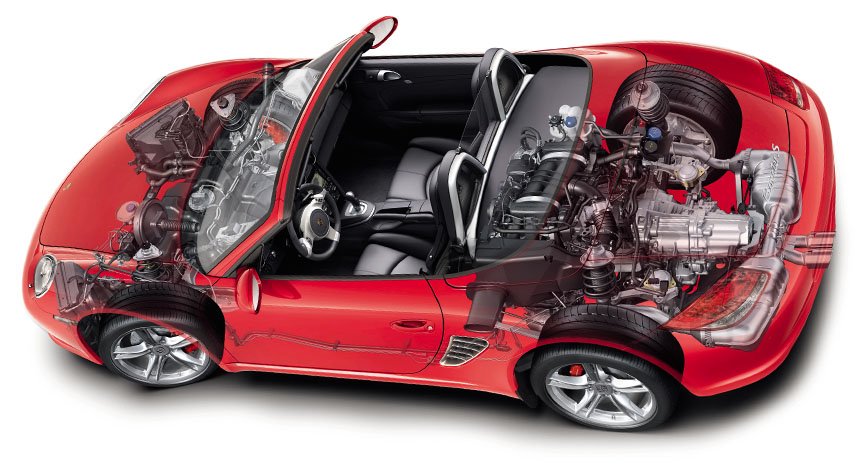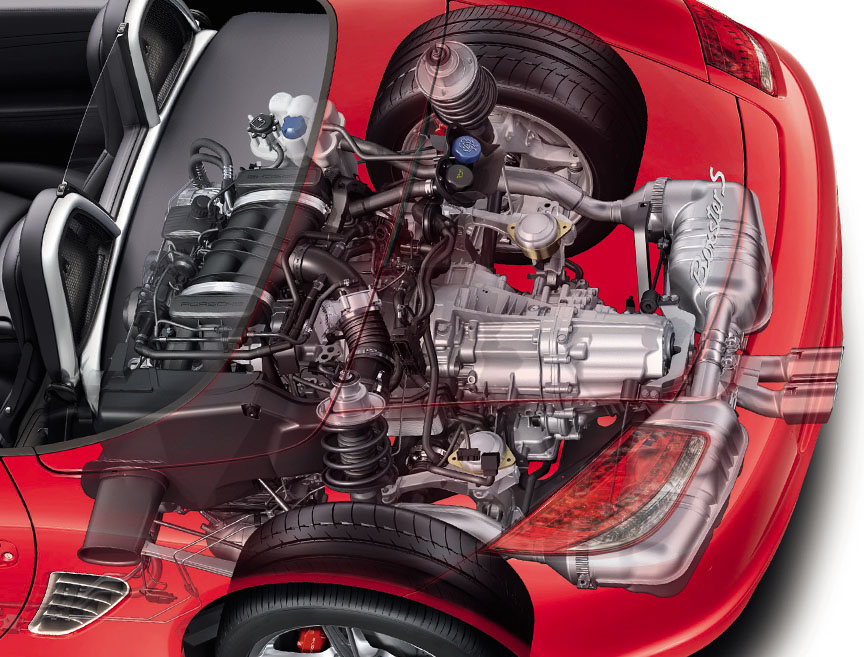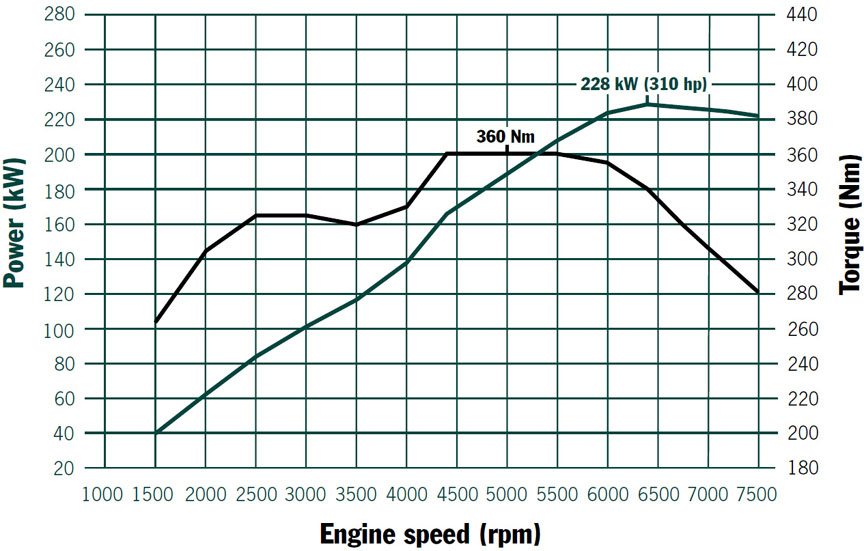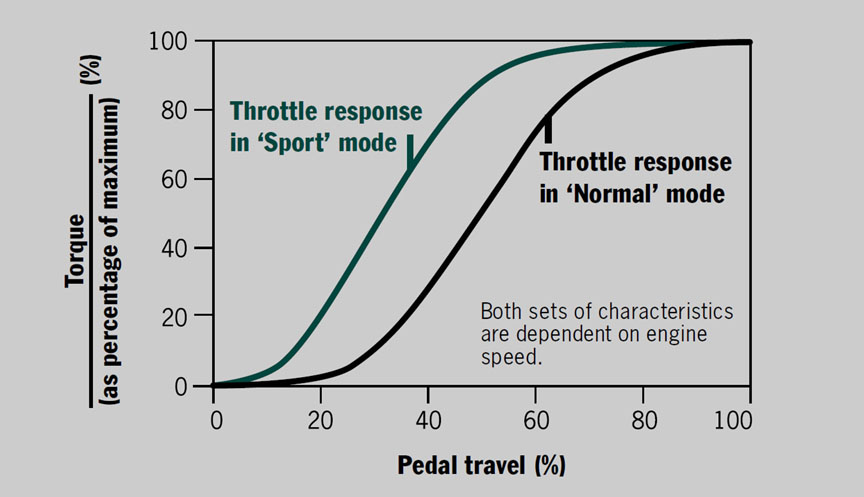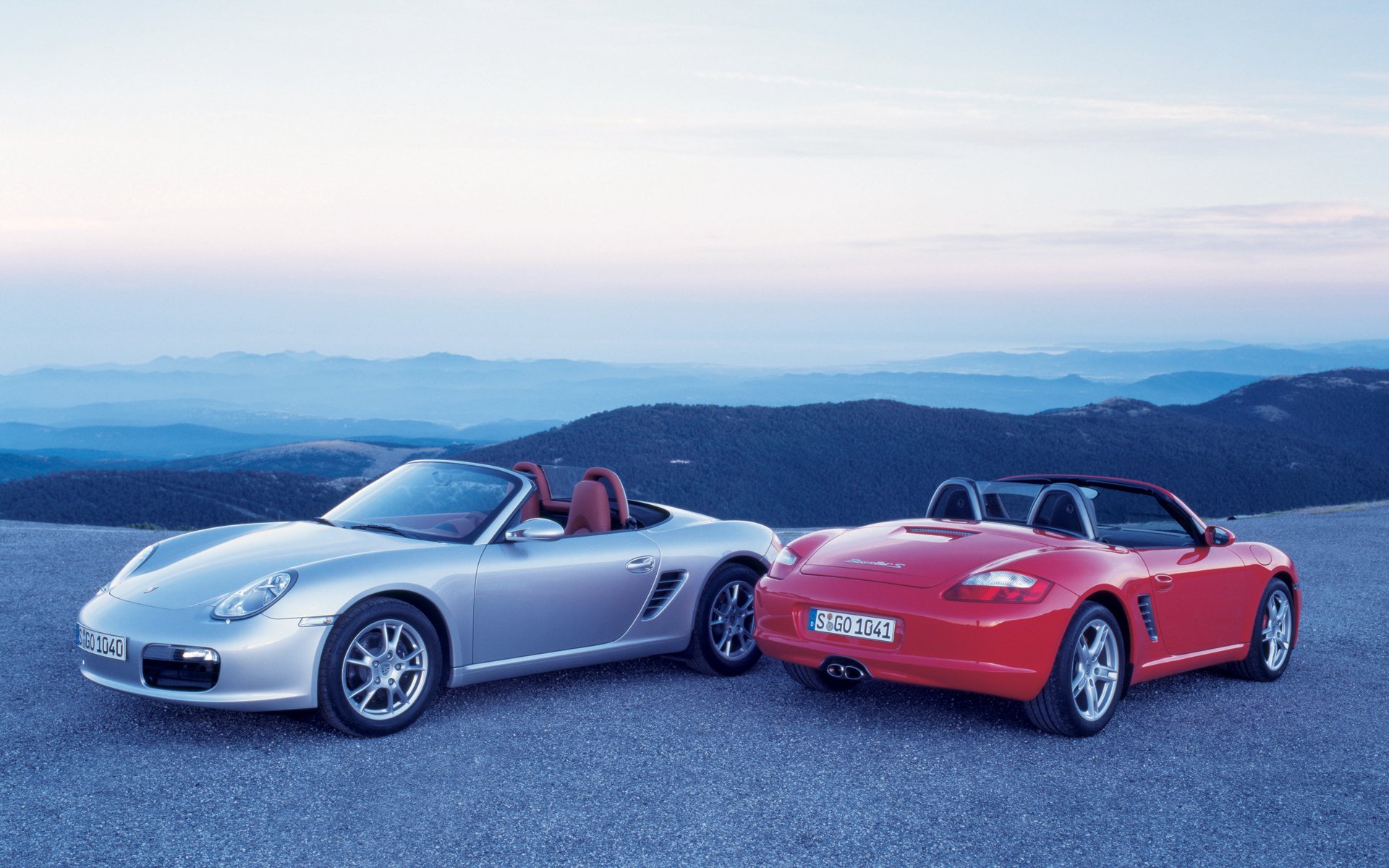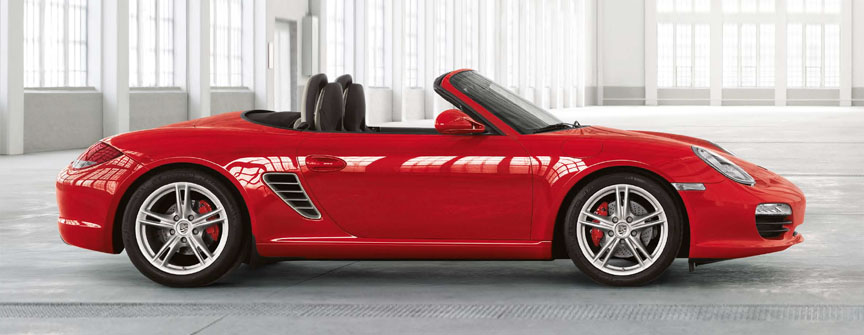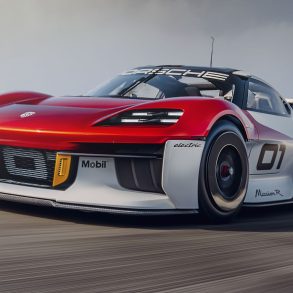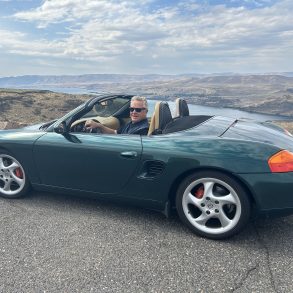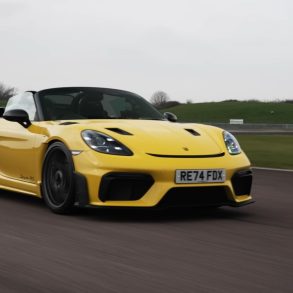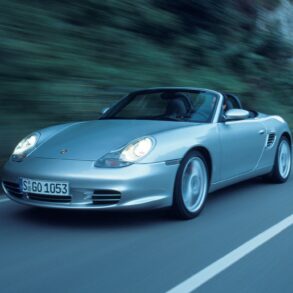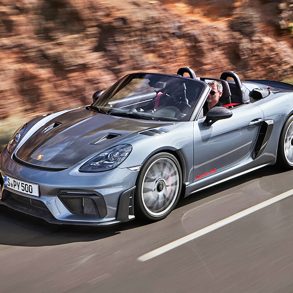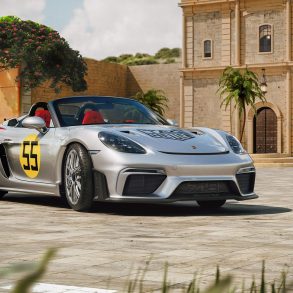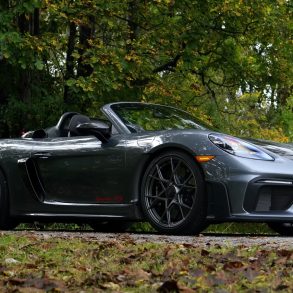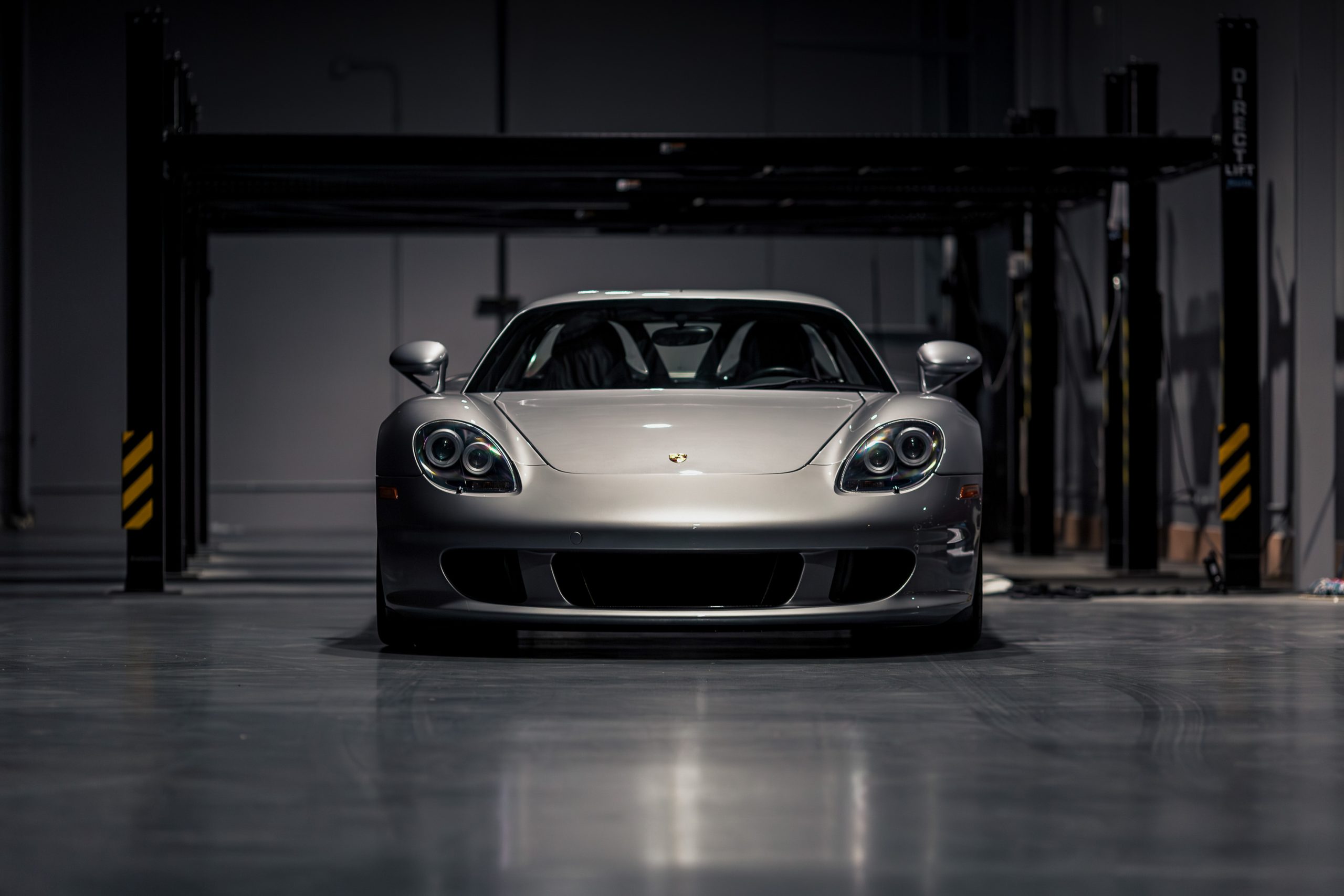2nd Generation Porsche Boxster (987) Story & History
Boxster 987.1 (2005 – 2008)
Official photos: 2004 September 7 / Premiere: 2004 September 23 at Mondial de l’Automobile Paris motor show press day / Market launch: 2004 November 27
Already since 1997, the 986-generation Boxsters were parallelly produced at the Valmet factory in Uusikaupunki, Finland. The development work of the 987-generation started in 2001 and the car was meant to be built in Uusikaupunki. In 2003 some “Made in Finland” pre-production cars were made and the production started in 2004. The bodies were fully made at Valmet and other parts were shipped there. The engines were naturally built in Stuttgart.
Starting with 987, the base 2.7 litre version got 17″ wheels as standard (6.5″+8″) and the Boxster S got 18″ wheels (8″+9″). Like with the 986, the 2.7-litre version came with a 5-speed manual gearbox as standard. The 6-speed was an option. Interestingly, the 6-speed gearbox didn’t lower the fuel consumption, but raised it a littlle bit (minimal difference, not worth mentioning). The initial 987 EU pricelist showed that the 2.7-litre verson was 9% cheaper and the 3.2-litre version 6% cheaper compared to the previous 986 generation models. The 987 models were launched for US market in January 2005.
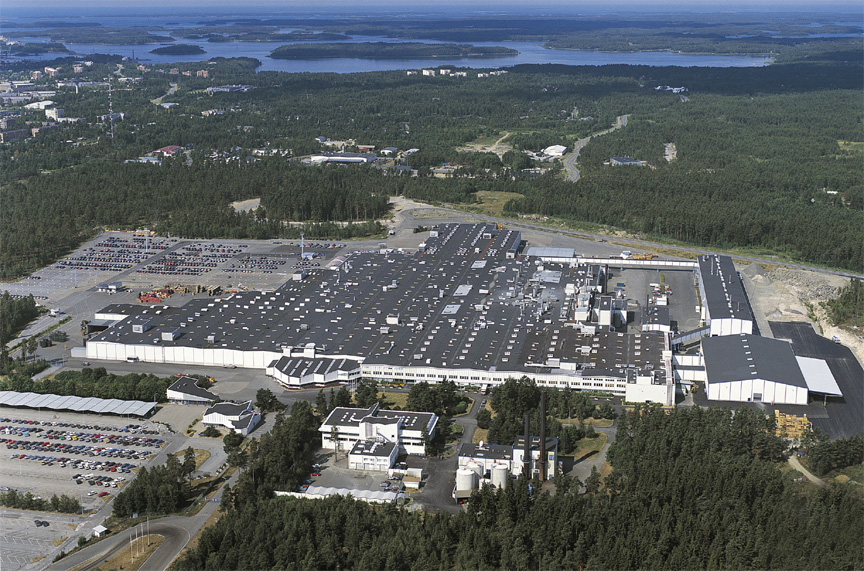
A ferry from Rostock brought parts to Uusikaupunki three times a week, and a ferry from Uusikaupunki brought most of the produced cars to Emden in Germany. To check if your 987 was made in Finland or in Germany, look up the 11th character in the VIN – if it is “U”, then it is Uusikaupunki, if it is “S” then it is Stuttgart.


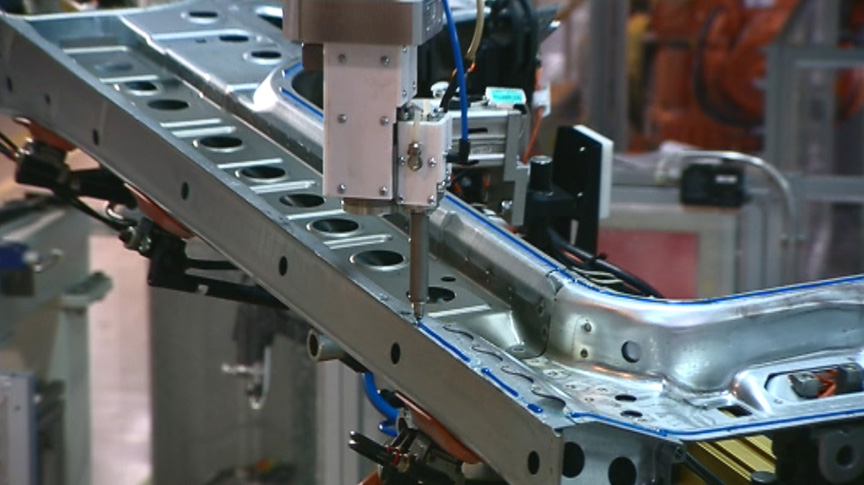
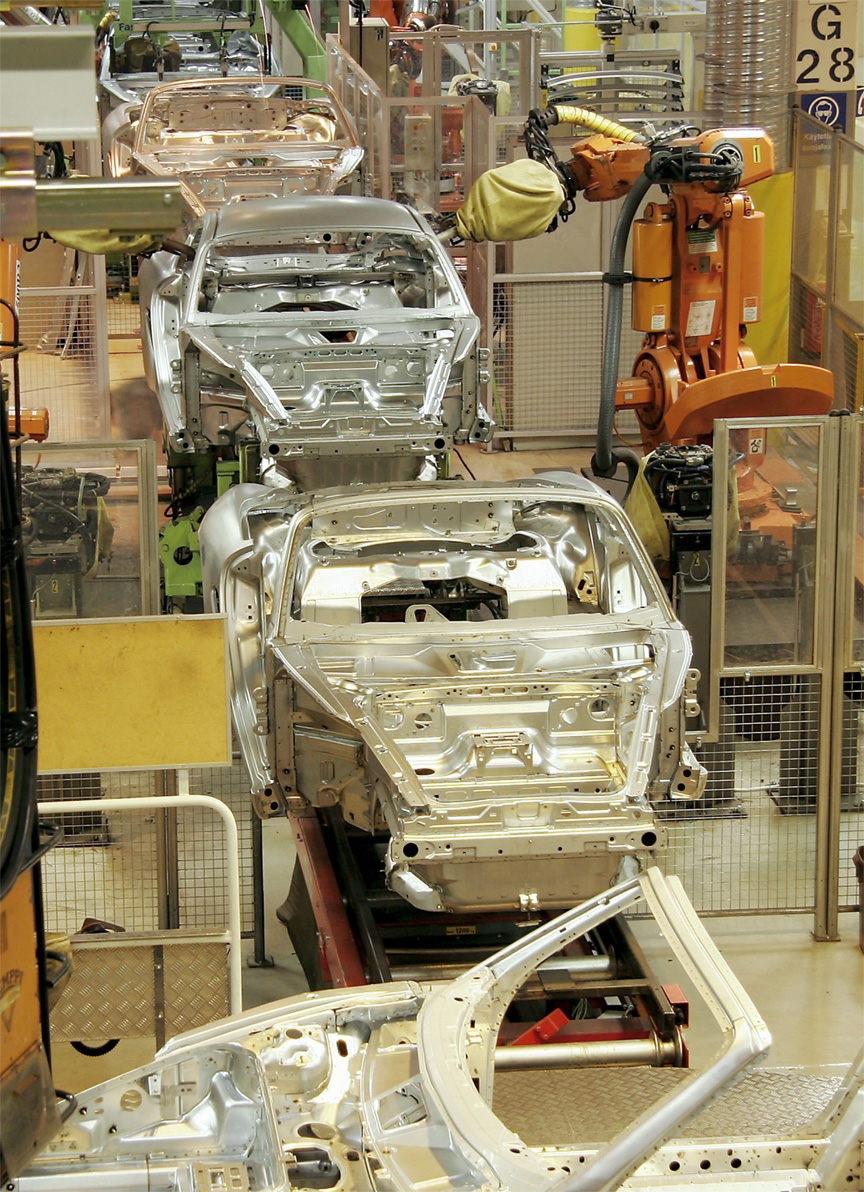
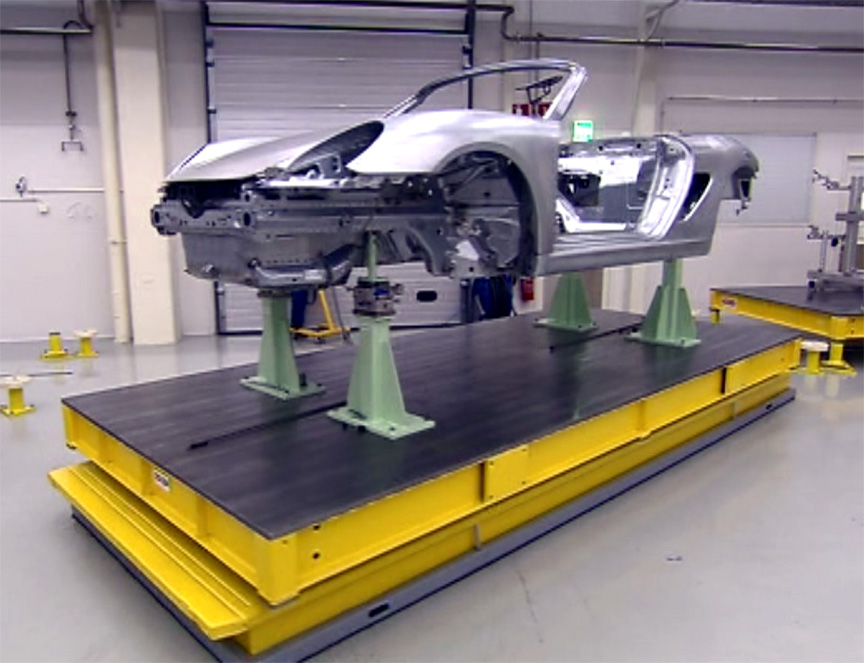
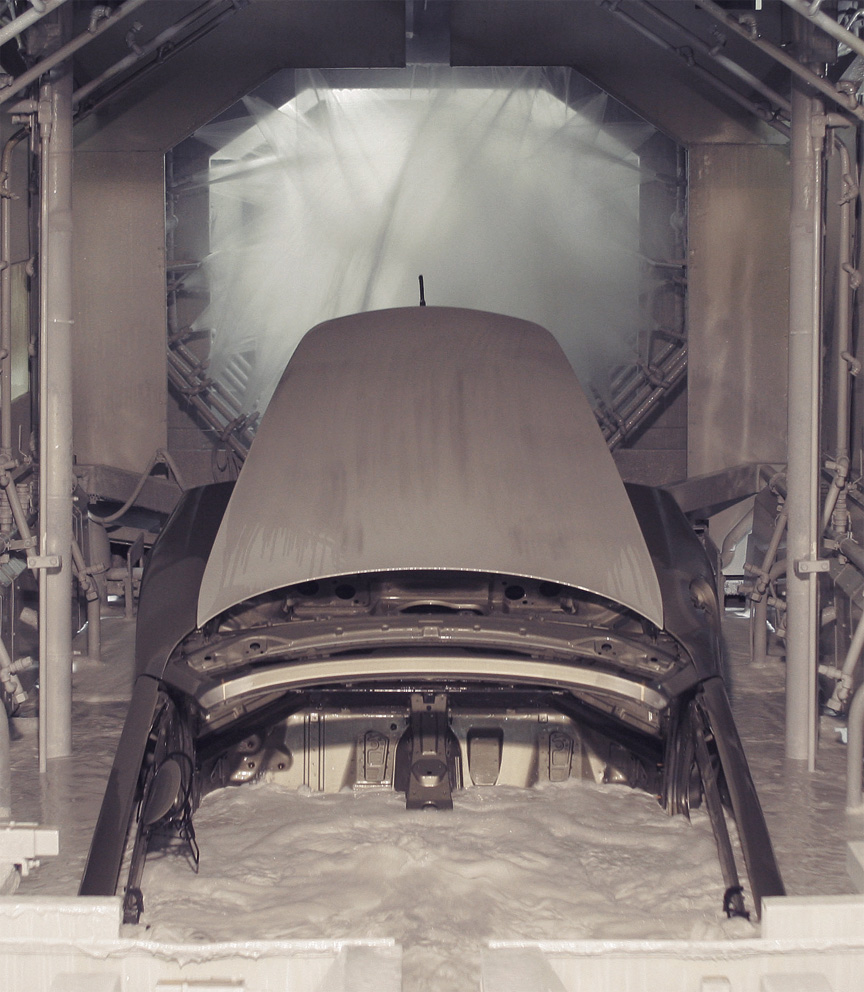
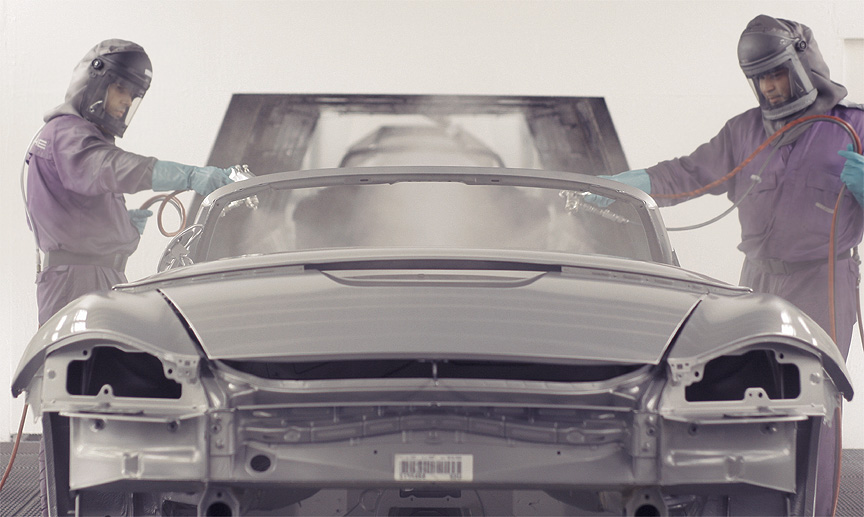
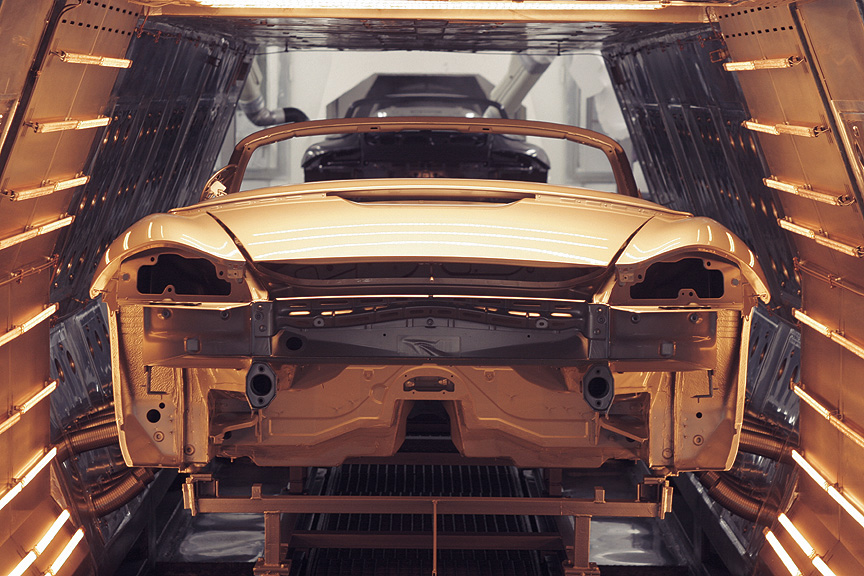
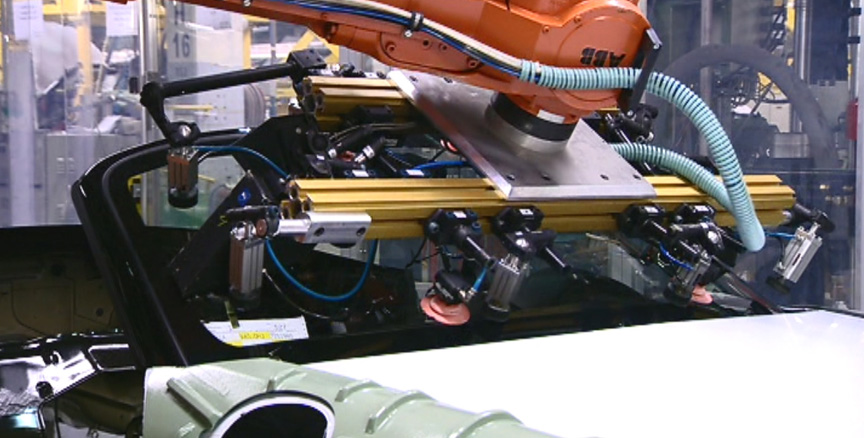
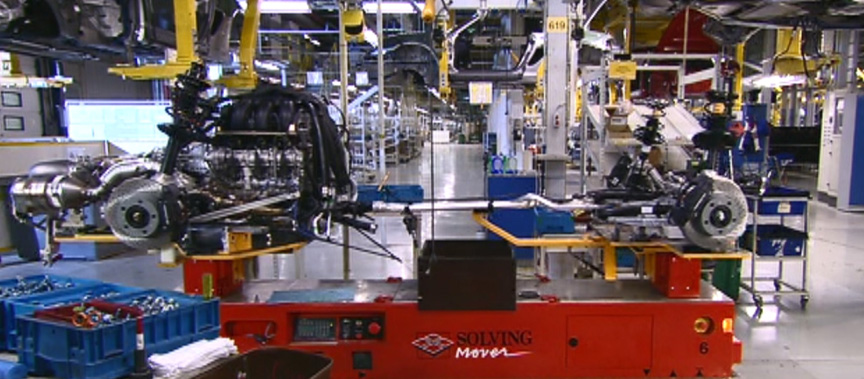
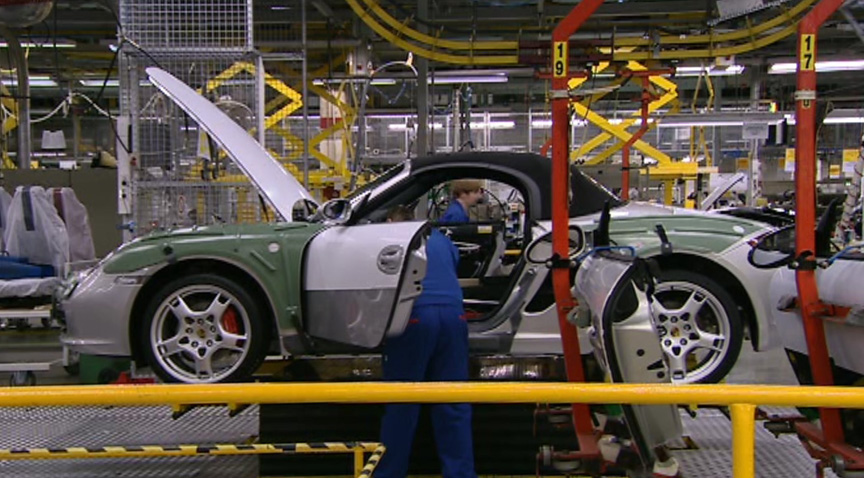
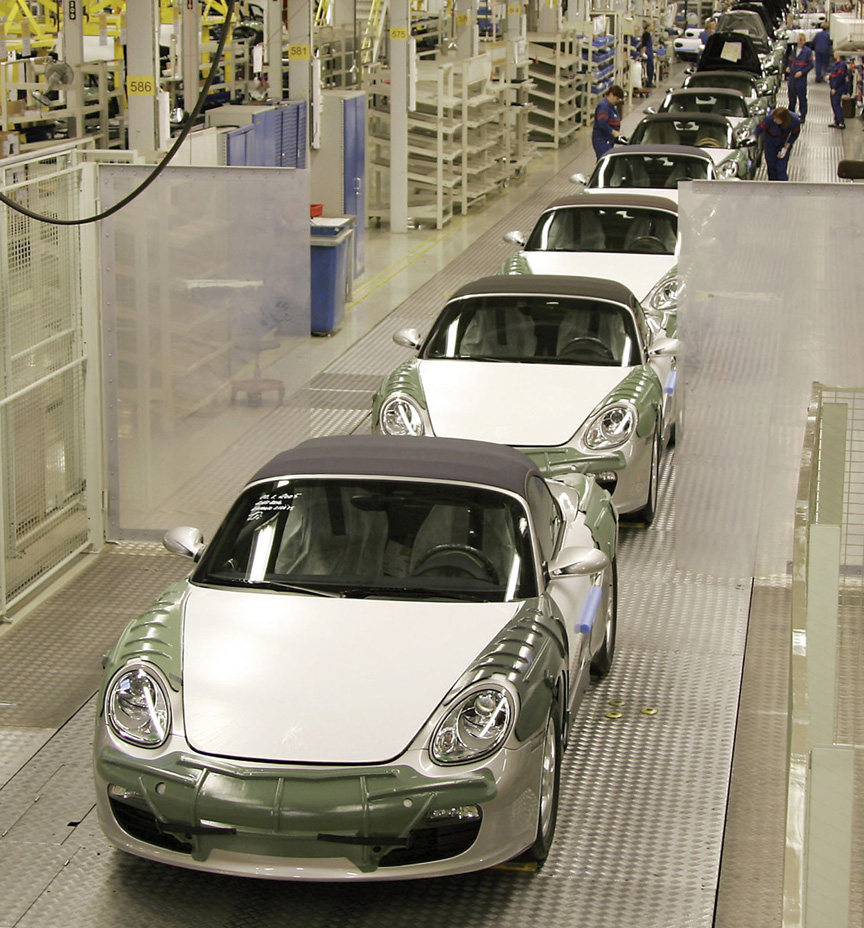
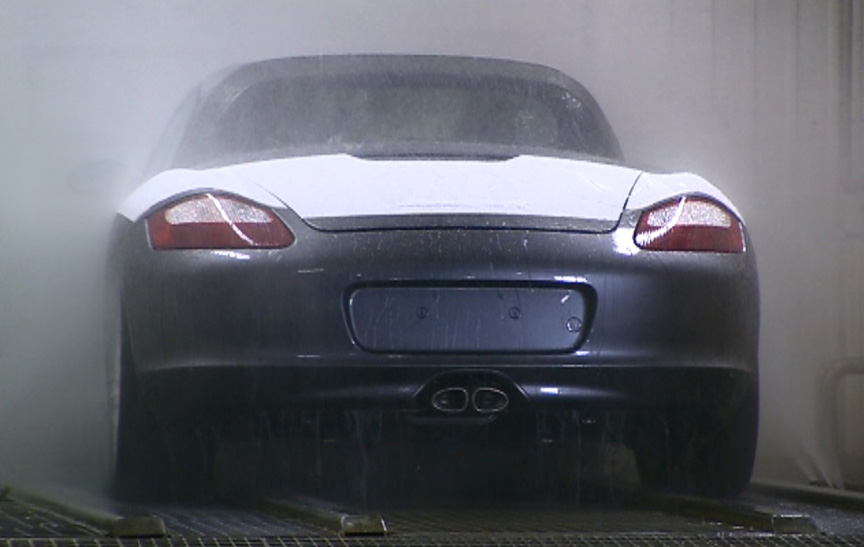
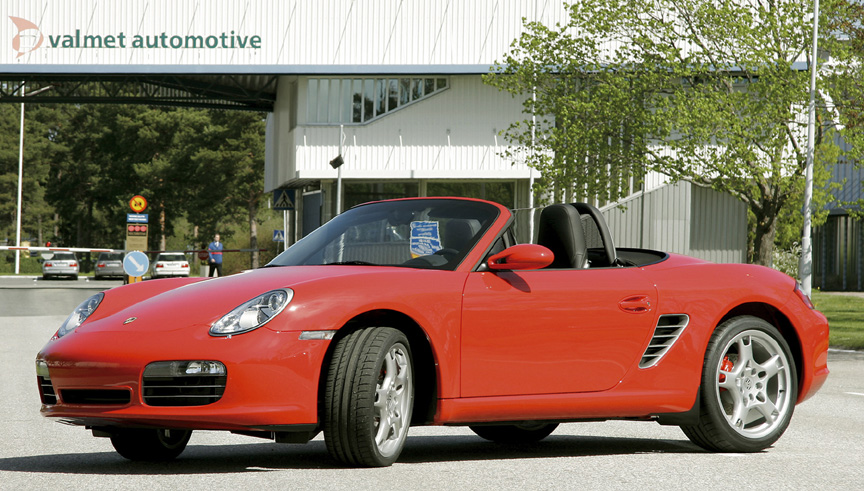
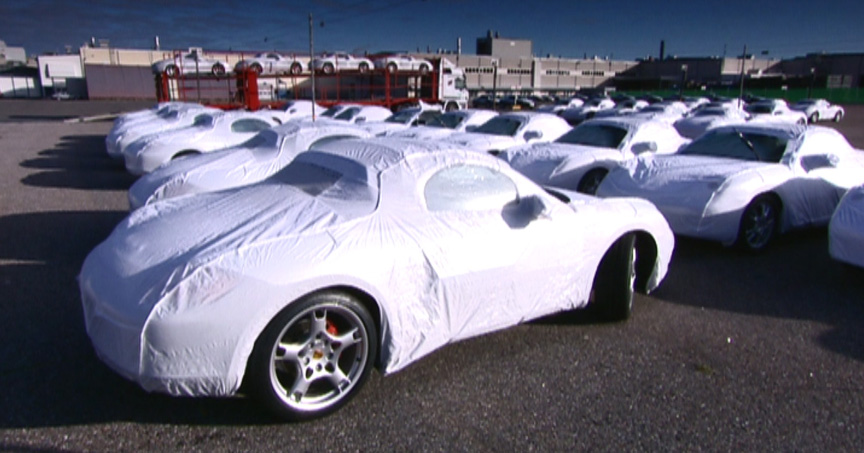
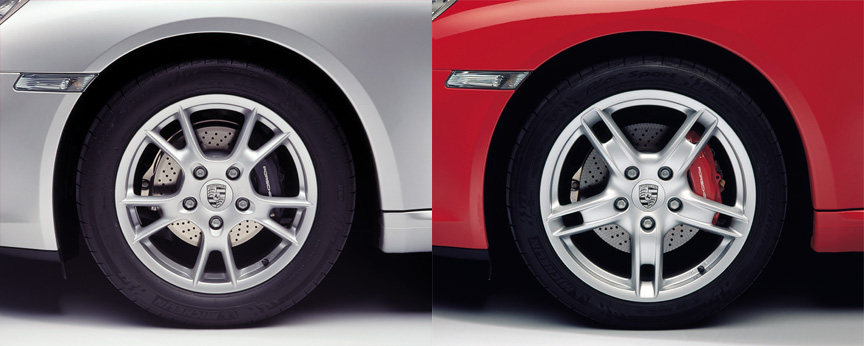
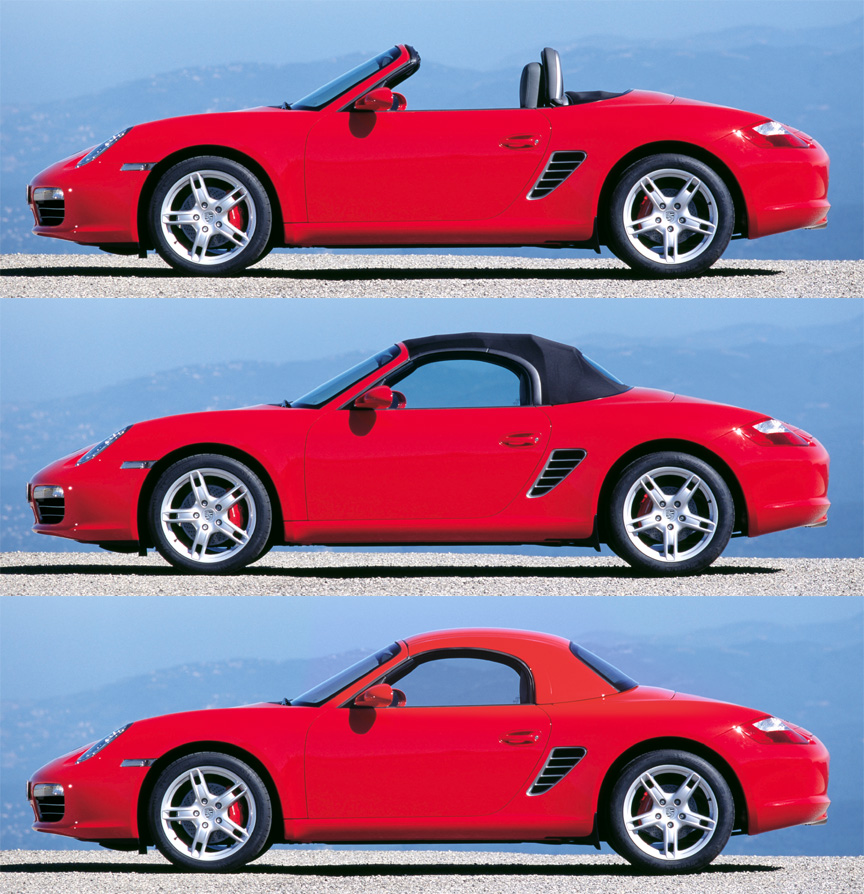
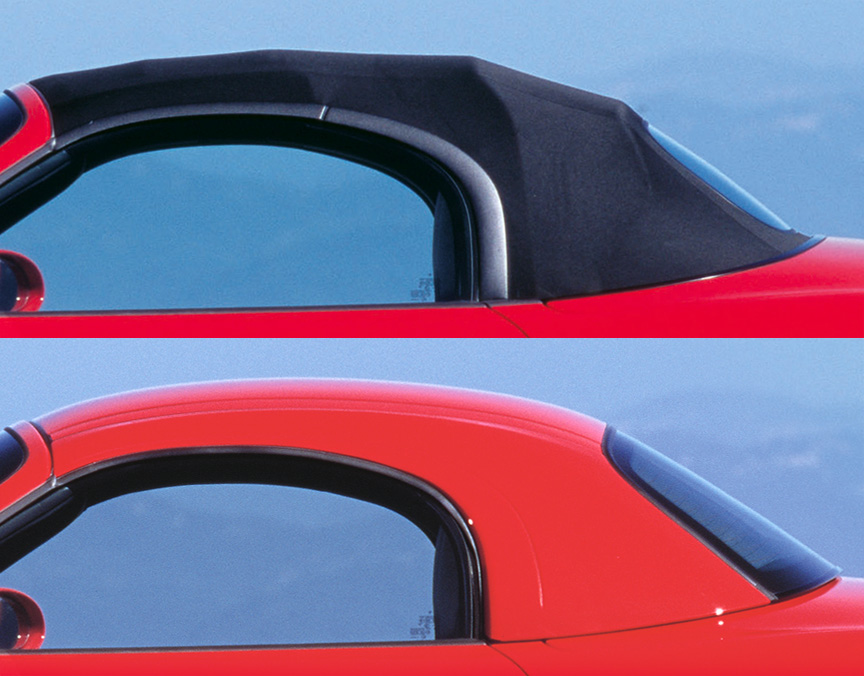
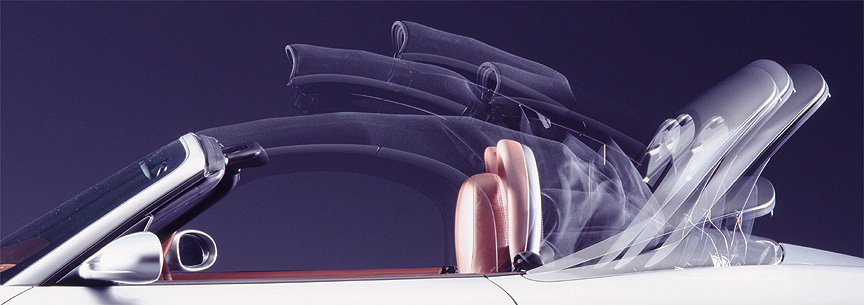
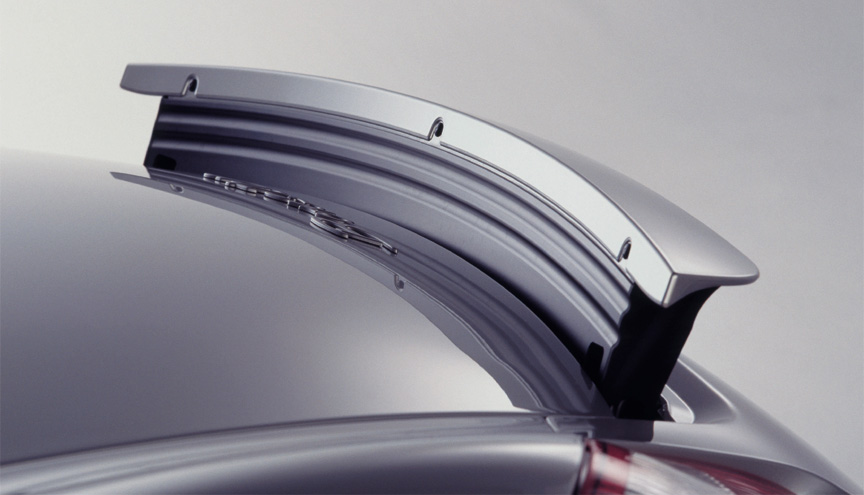
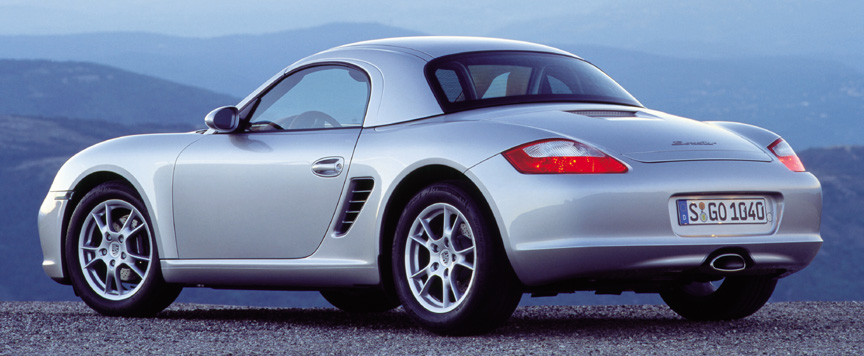

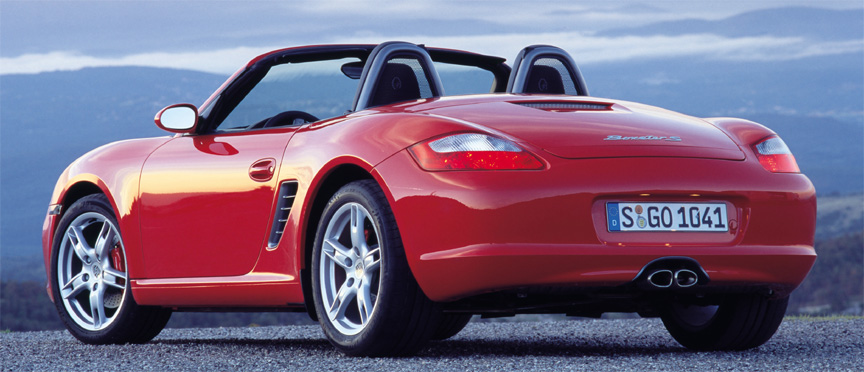
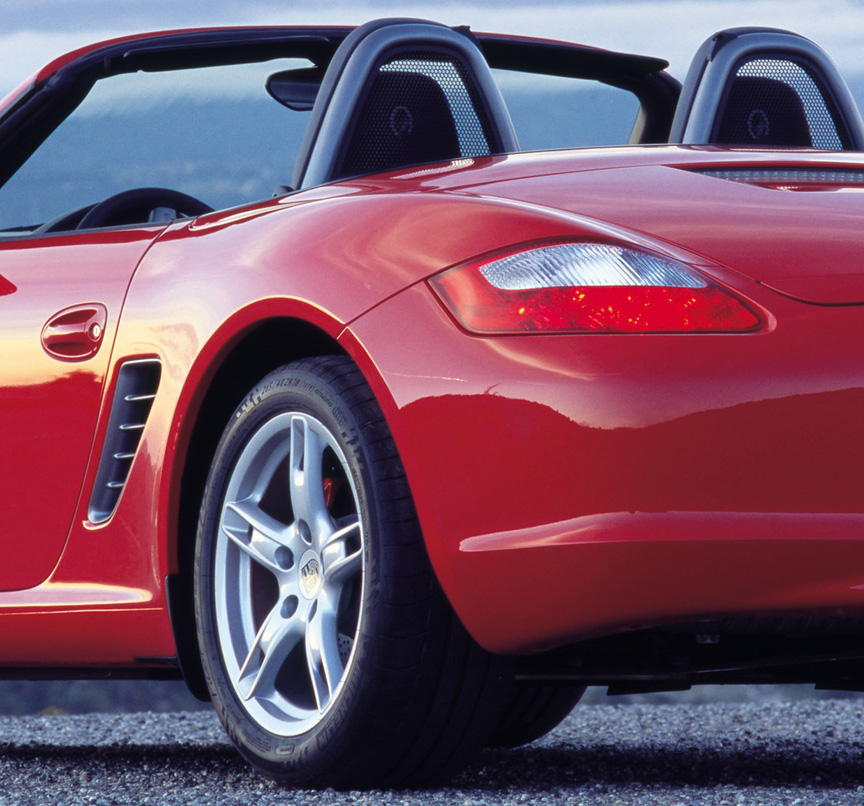
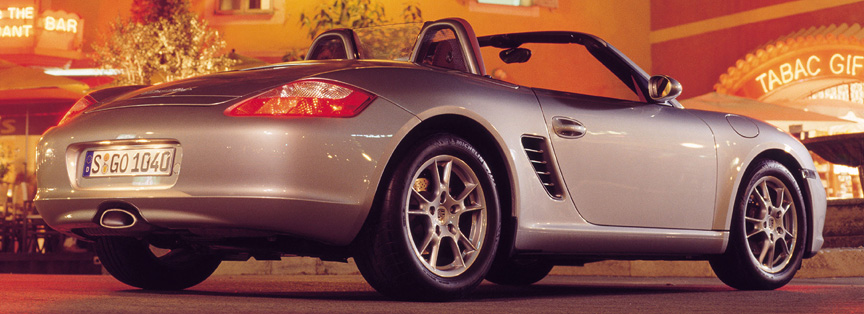
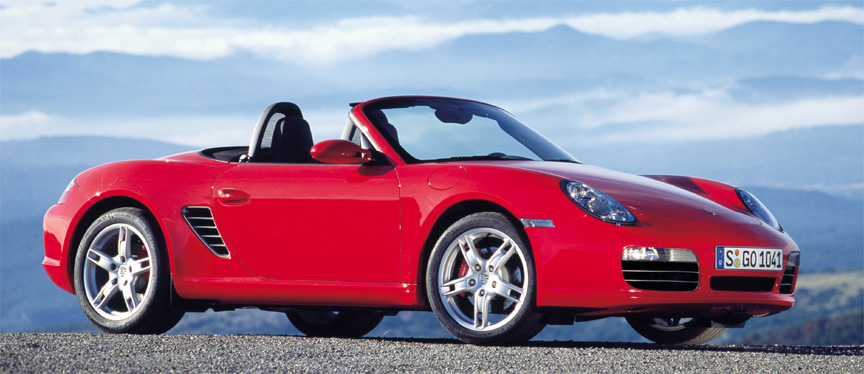
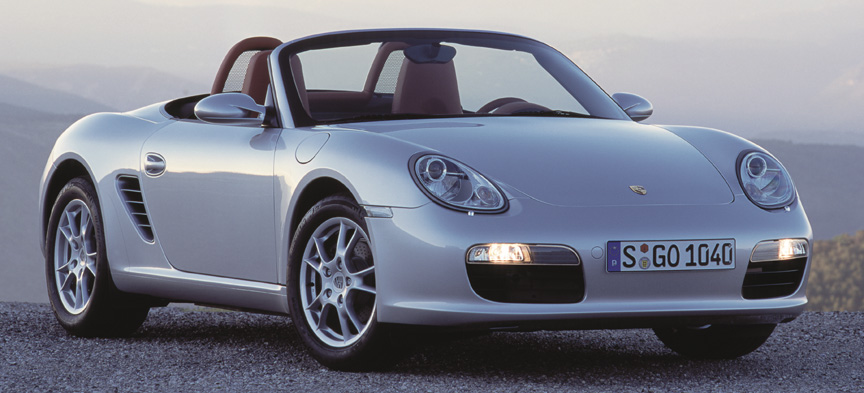
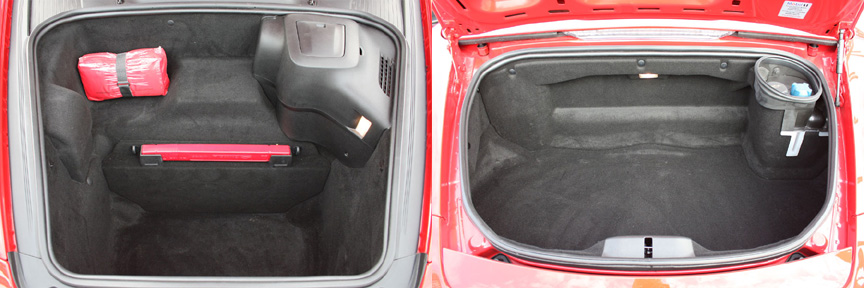
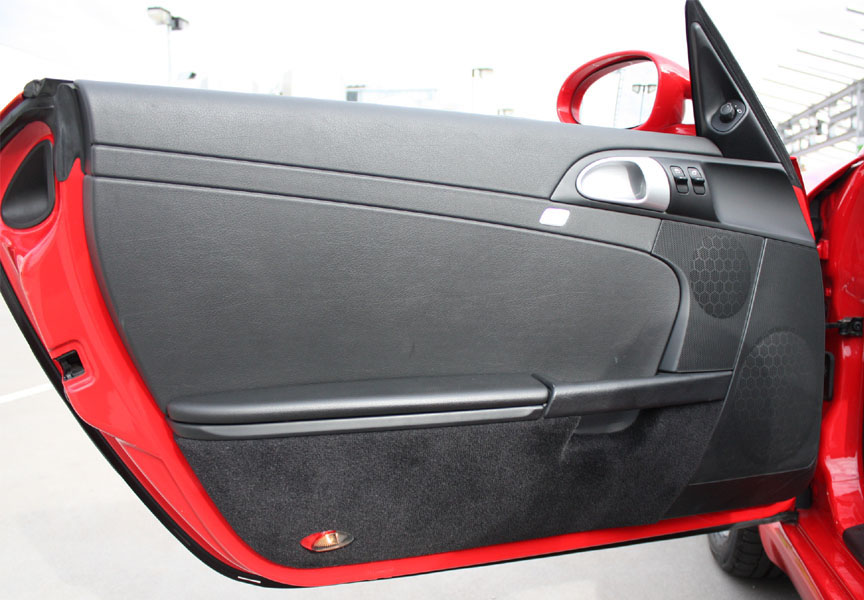
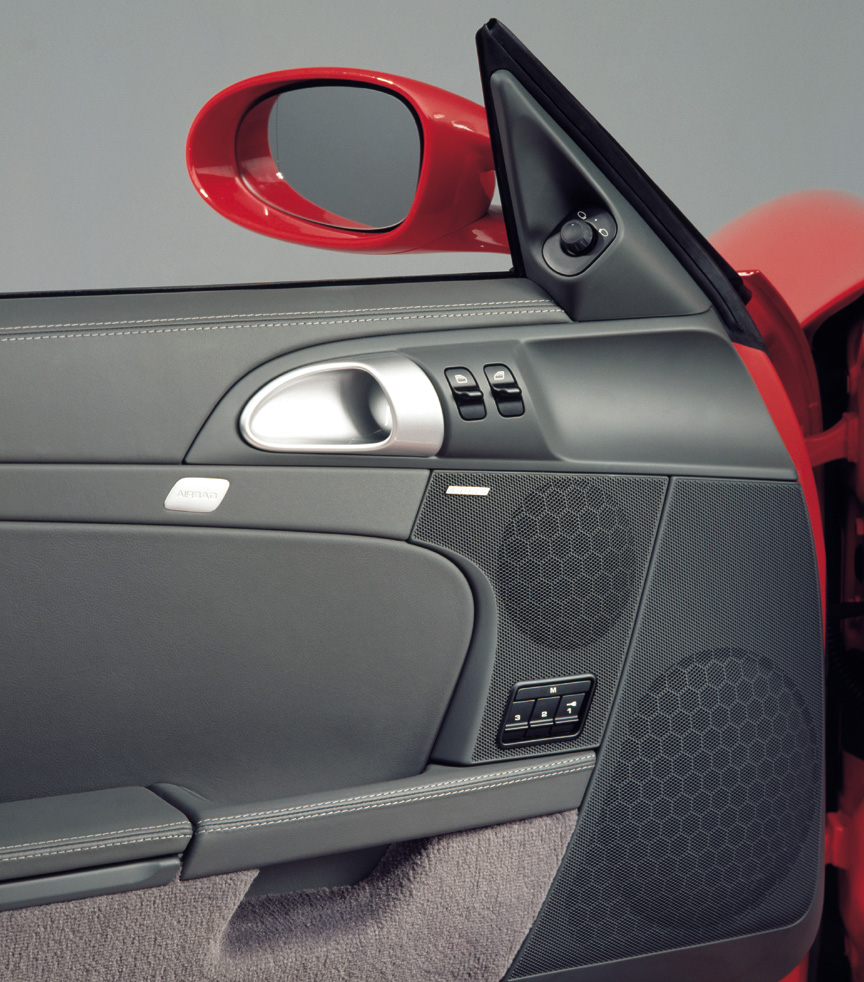
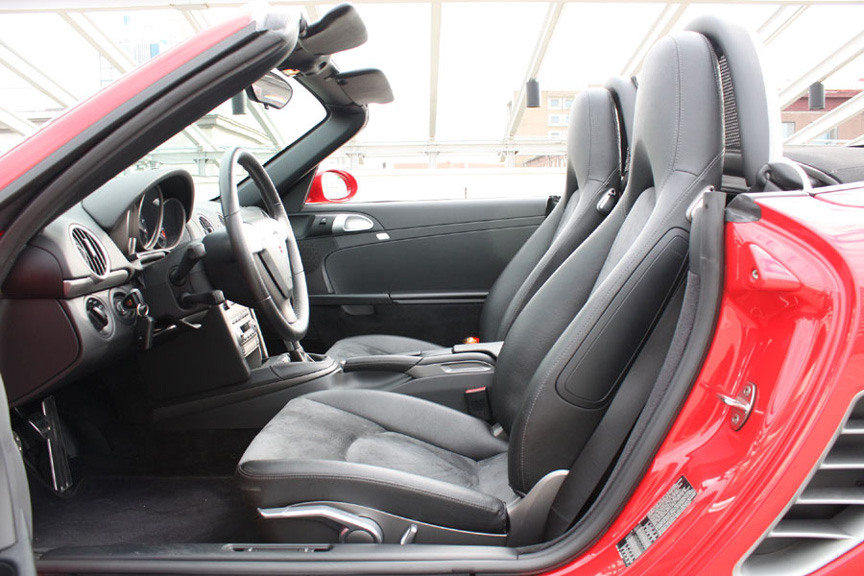
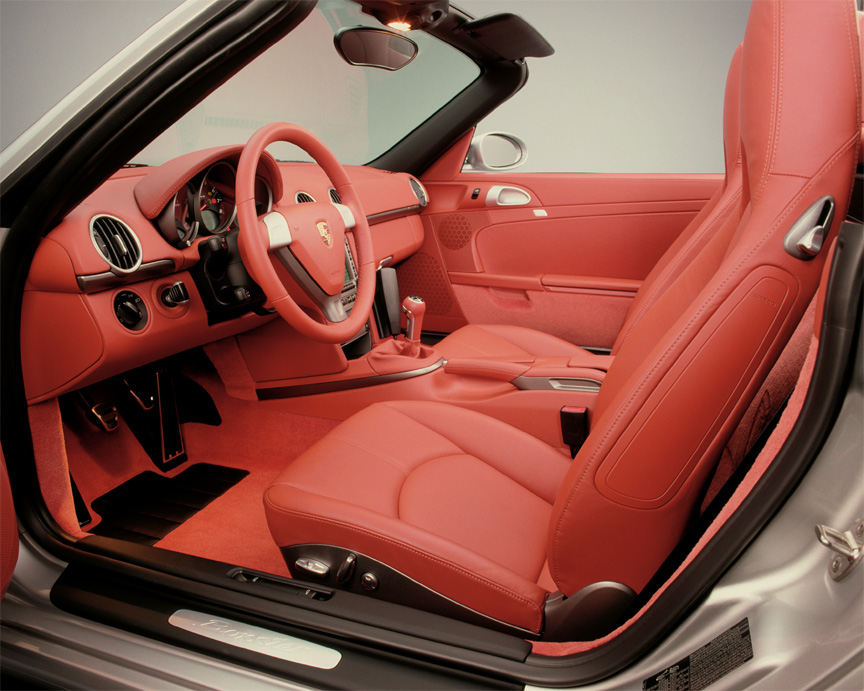
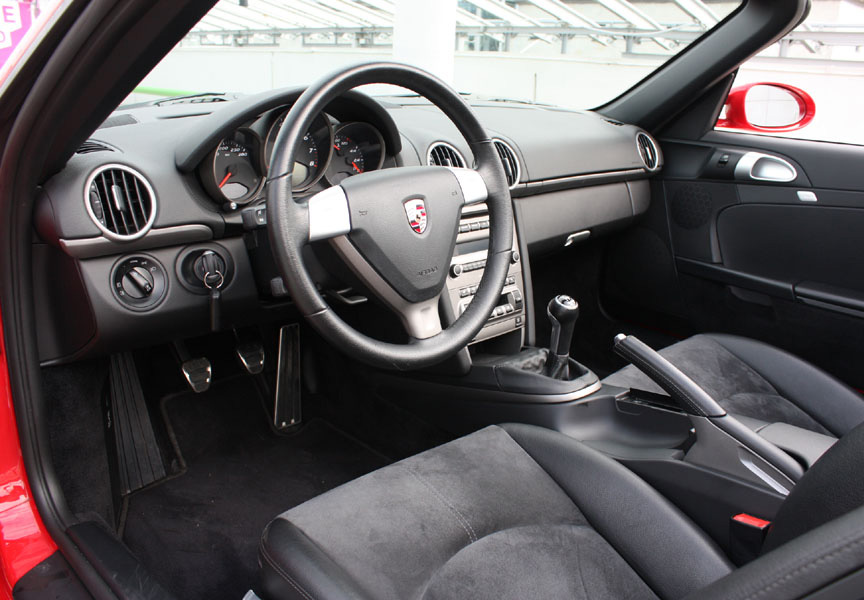
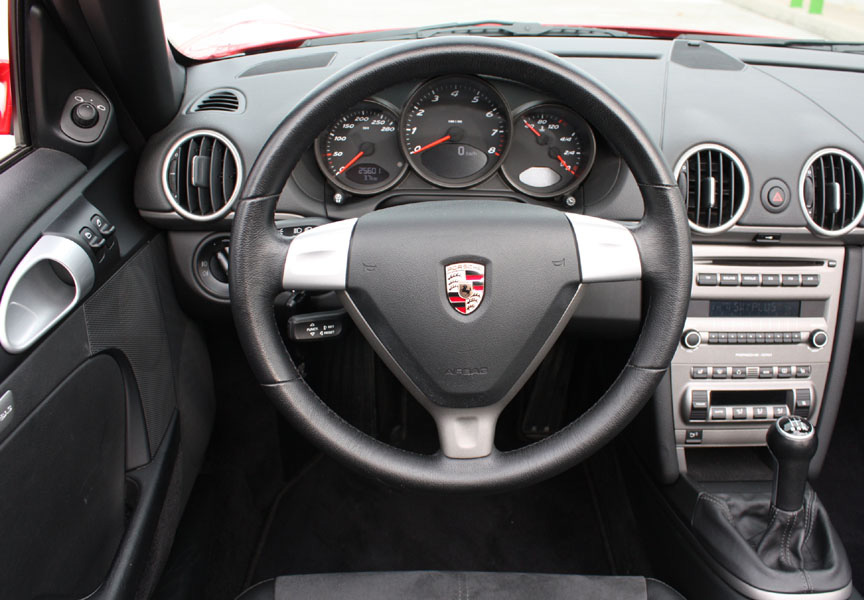
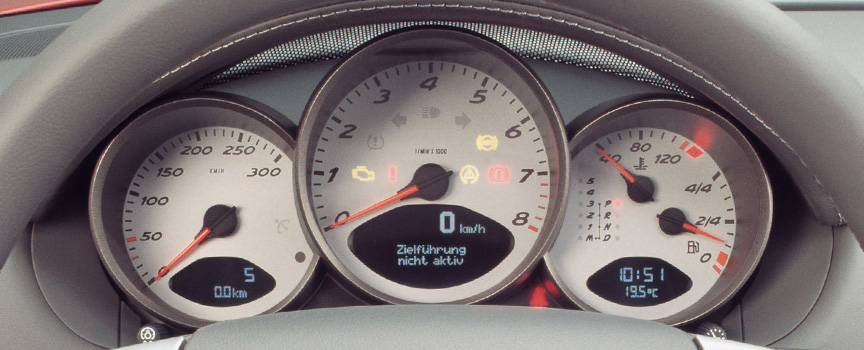

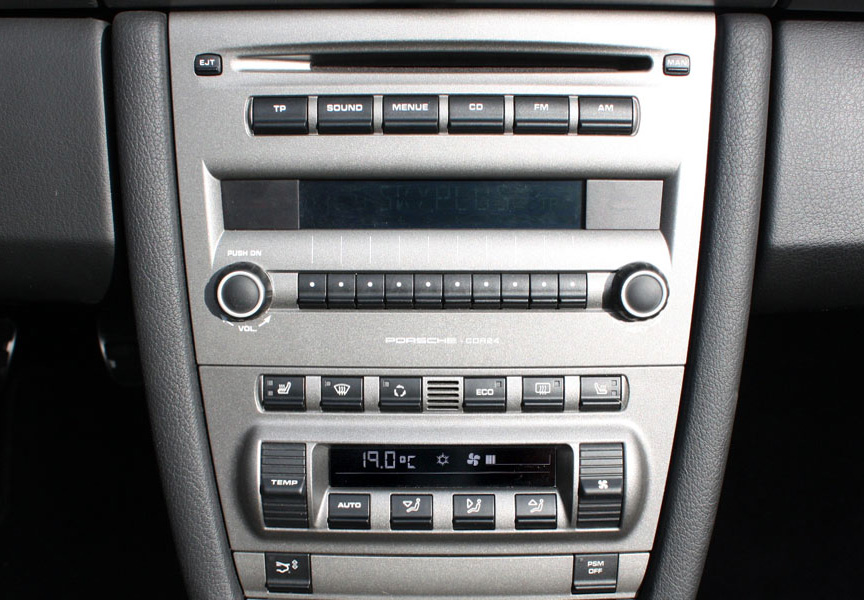
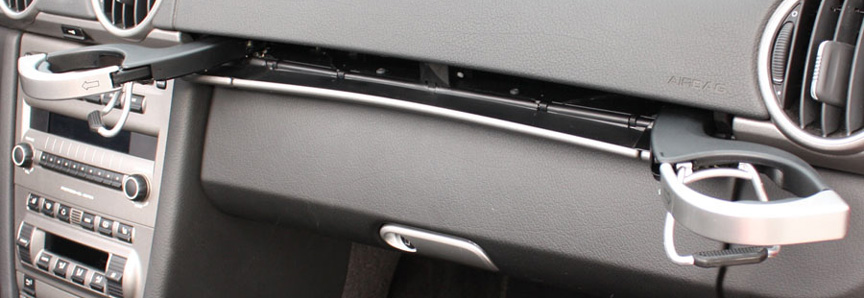
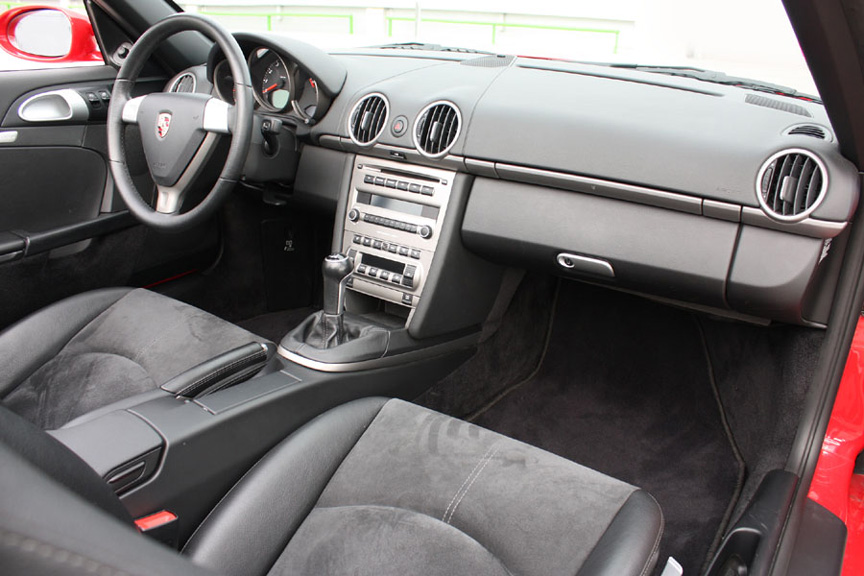
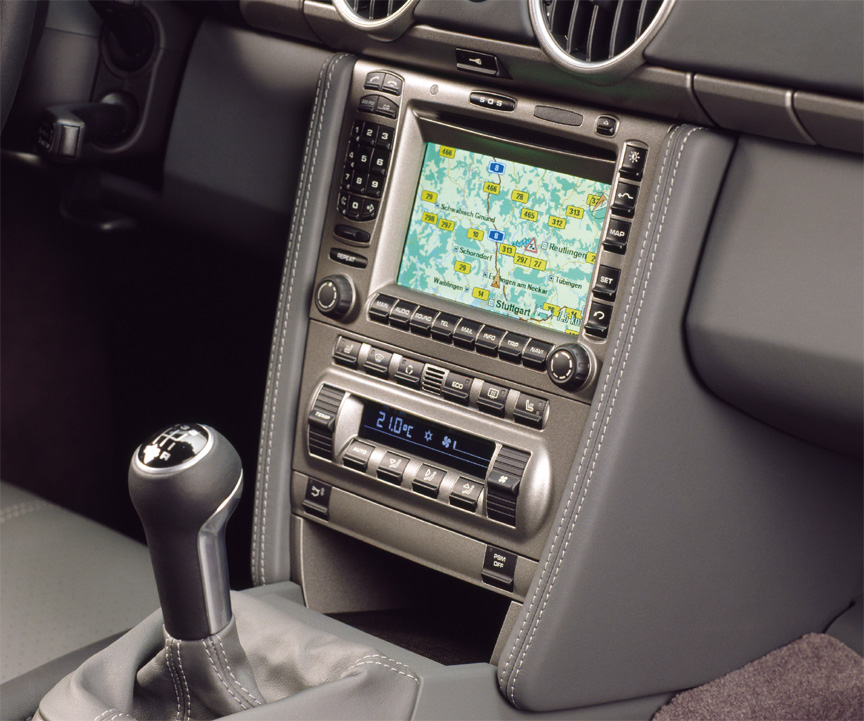
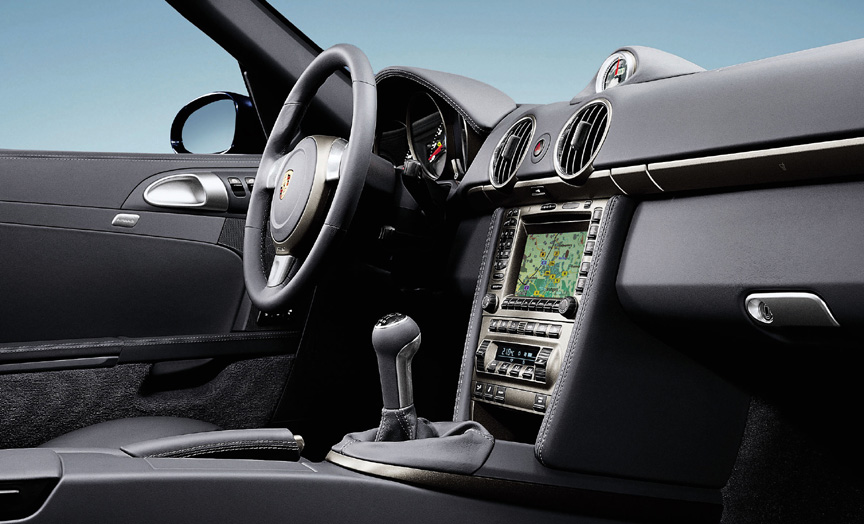
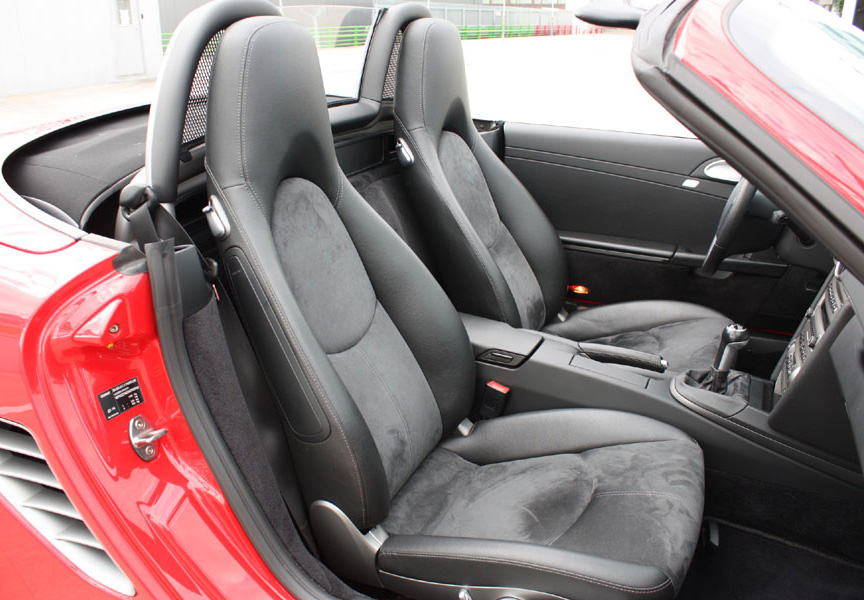

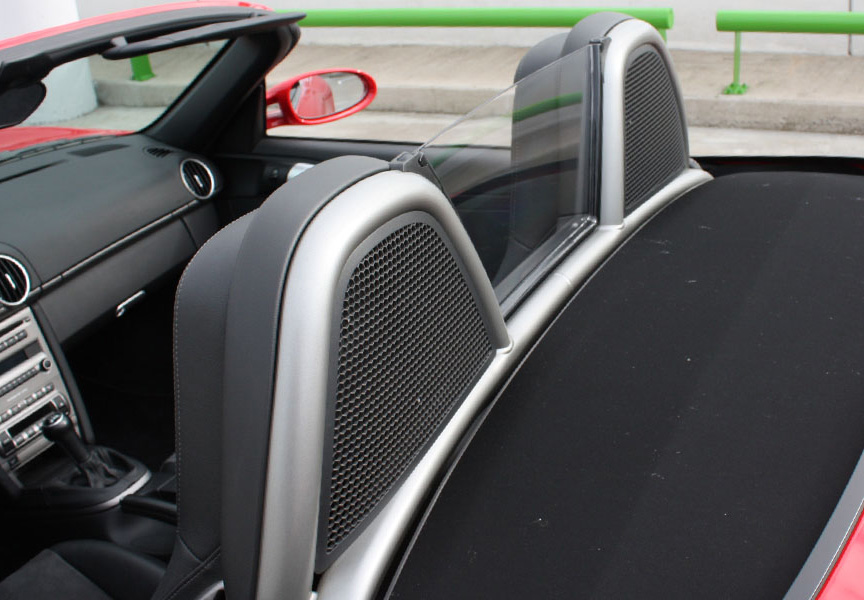
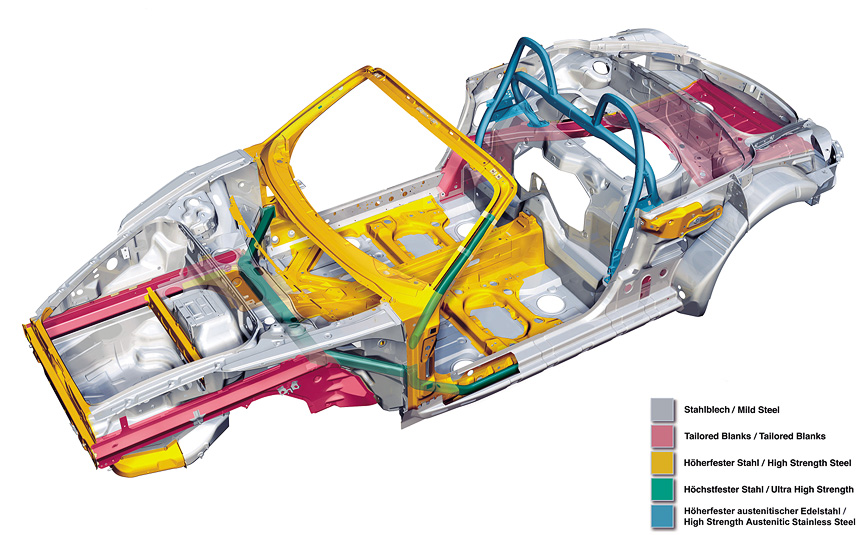

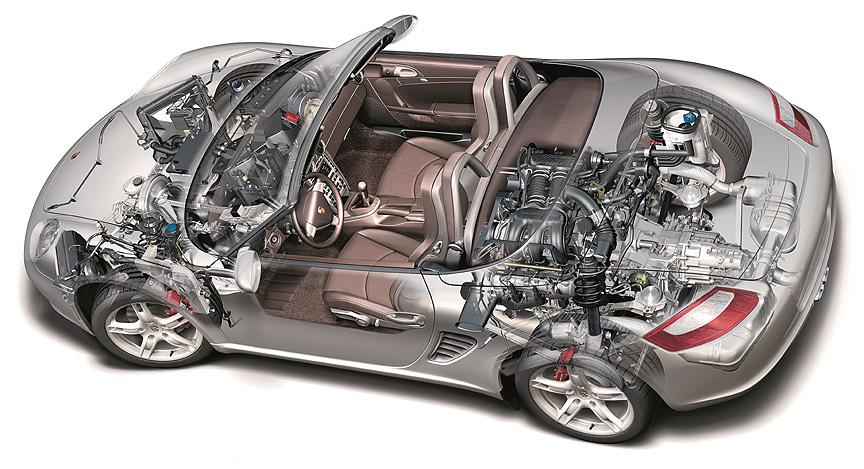
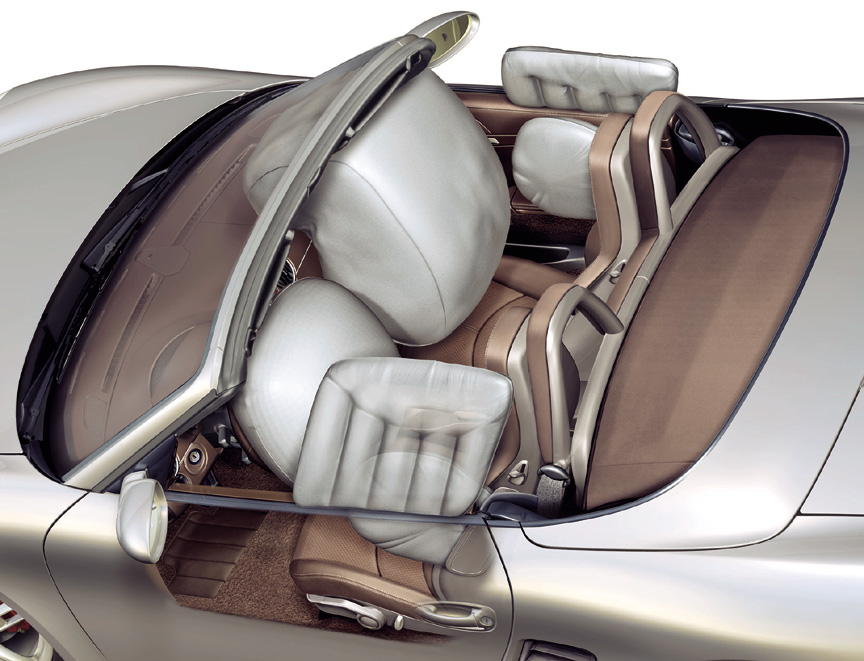
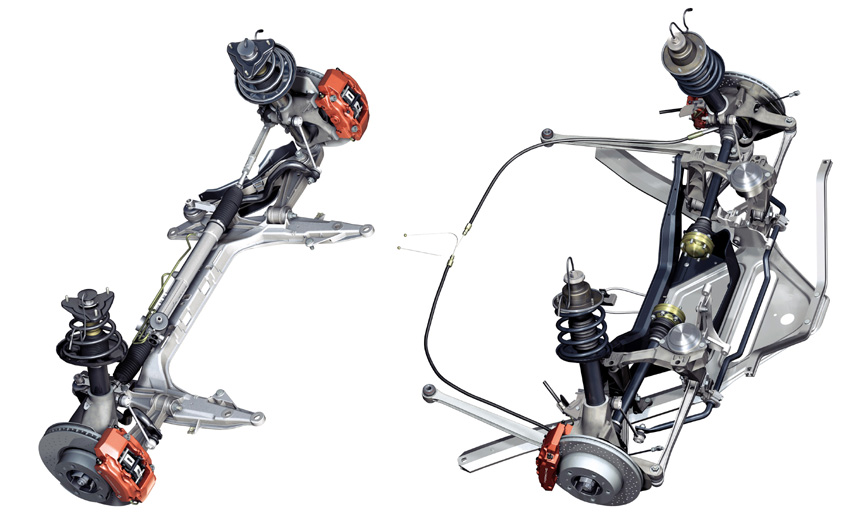
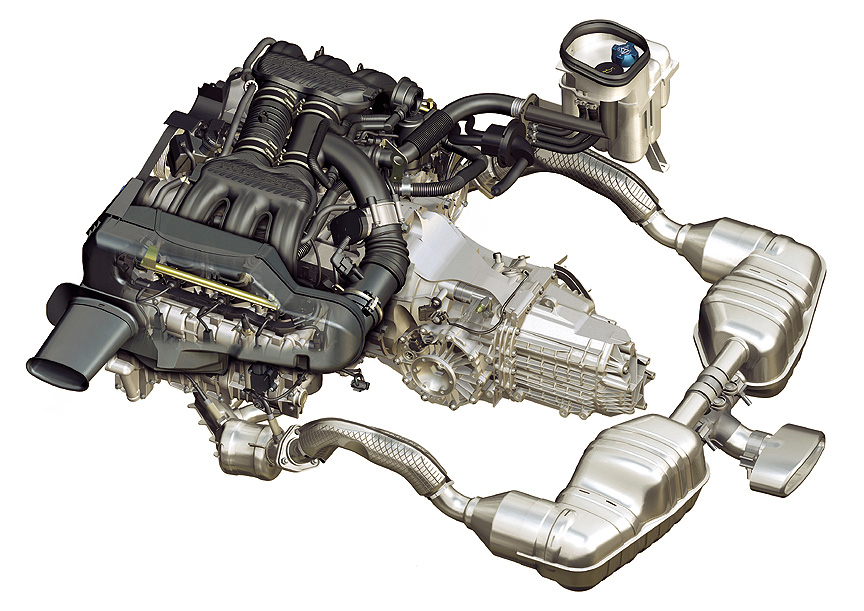
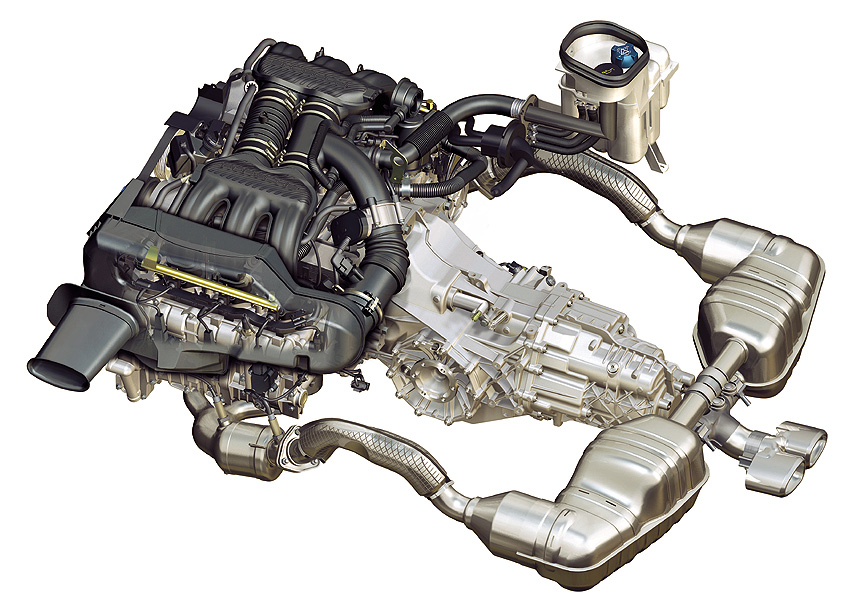
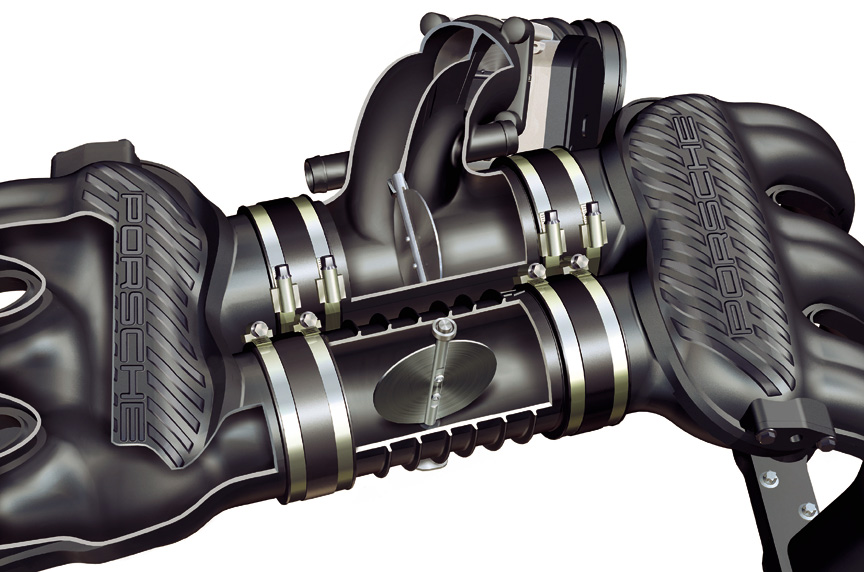
From the 2006 model year (August 1, 2005), the Boxster and Boxster S got more powerful engines and the optional Tiptronic transmission and the Sport Chrono Package were given additional functions. The 2.7-liter engine got 4 kW more power (now 180 kW). The Boxster S engine, which was increased in size from 3.2 to 3.4 litres, developed 217 kW (+11 kW) and sprinted from 0 to 100 km/h 0.1 second faster. Both flat-six engines were equipped with VarioCam Plus valve control: with variable valve timing (VarioCam) and changeover valve lift (Plus).
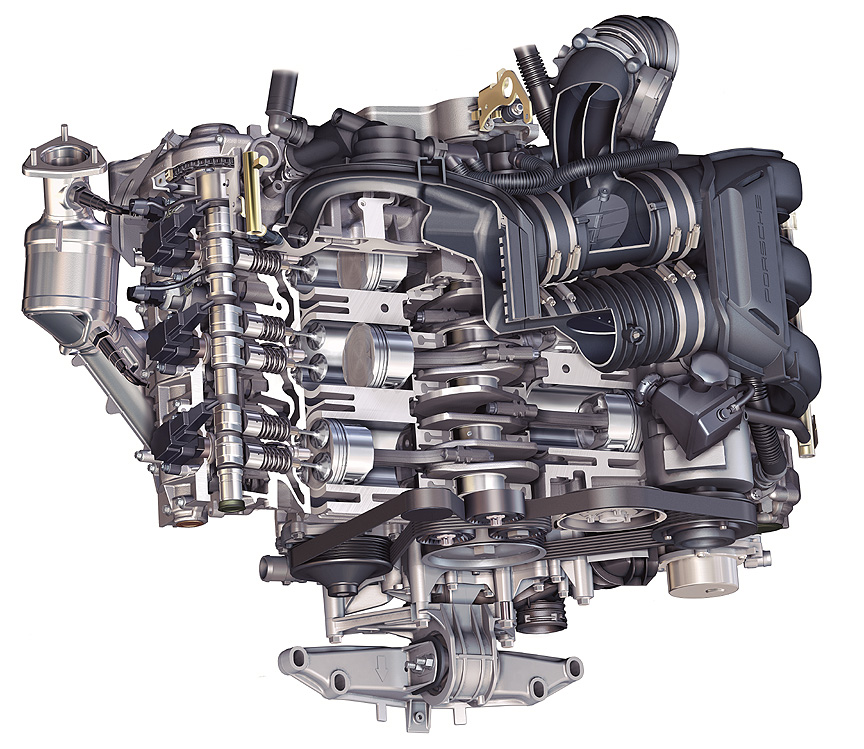
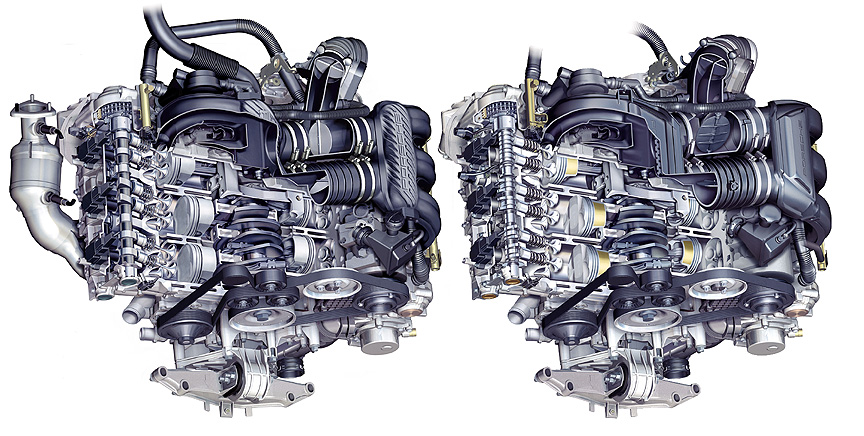
SportDesign bodykit
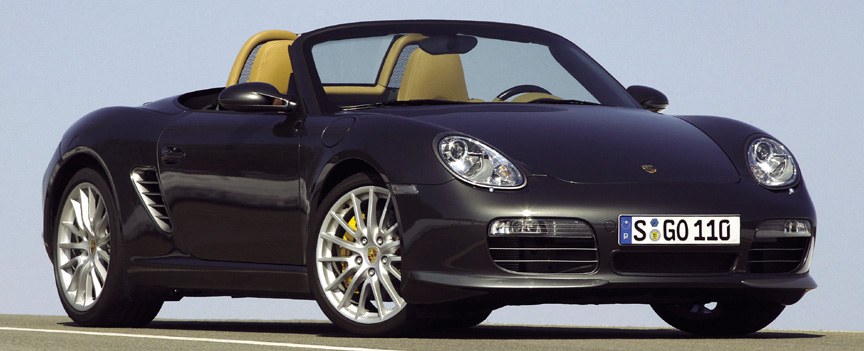


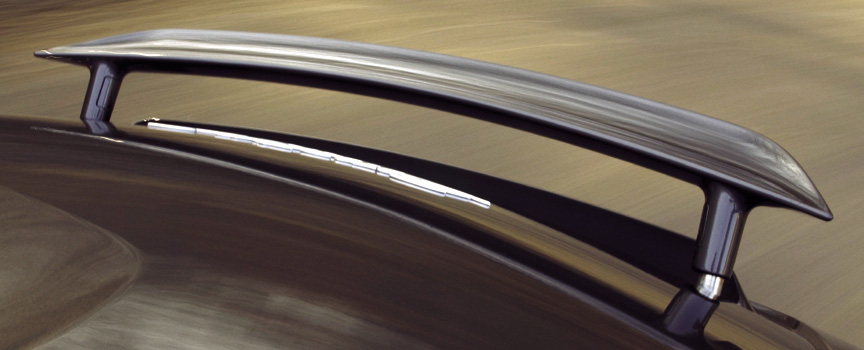

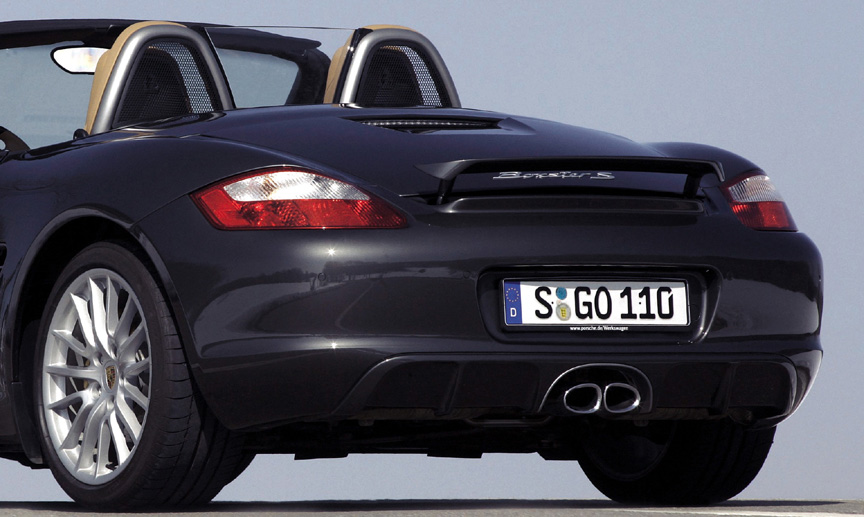
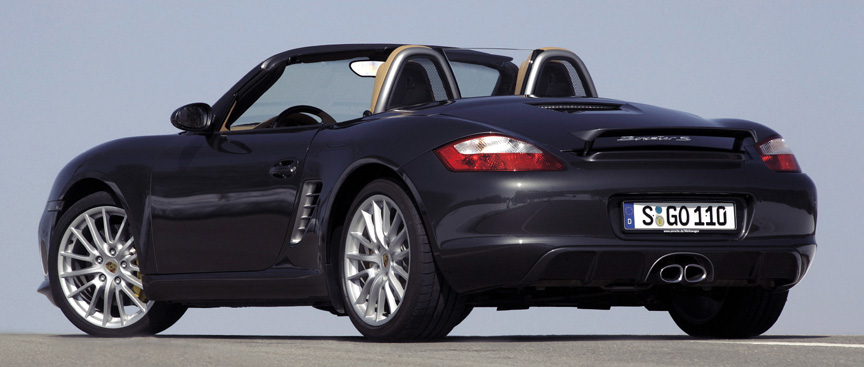
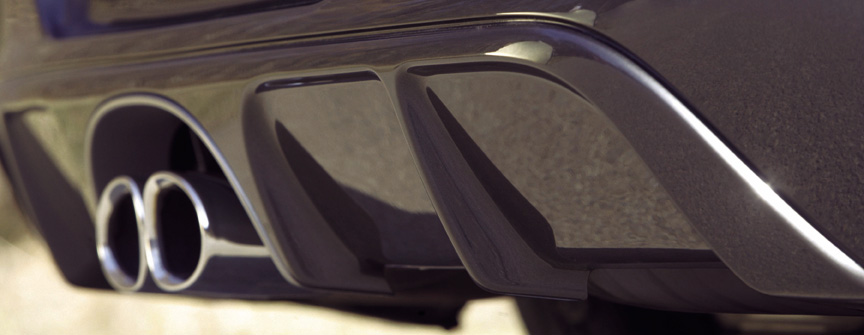
Model year 2007 had a slight modification inside the rear luggage compartment – the coolant and engine oil filler caps were relocated to behind the wall, increasing the size of the rear trunk. The 19″ Turbo-look forged alloy two-tone wheels became available, 8″ wide for the front axle and 9.5″ for the rear.
On November 20, 2006, Dr. Ing. h.c. F. Porsche AG celebrated a production milestone: the 200,000th Boxster (986+987, Stuttgart+Uusikaupunki) rolled off the production line. The landmark vehicle, a meteor grey metallic Boxster S ordered by a customer in the USA, was made at the Valmet factory. Michael Macht, Executive Vice President of Production and Logistics, said: “Ten years ago, no one would have believed what a huge success this Porsche mid-range roadster has become. Thanks to our flexible production system, we can manufacture the Boxster model series at both our main plant in Zuffenhausen and at Valmet.”
PCNA Limited Edition
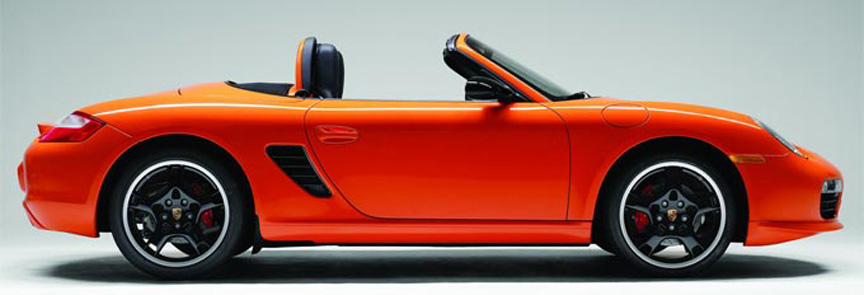
In 2007, 500 Limited Edition Boxster and Boxster S were made for Porsche Cars North America, the importer for USA and Canada. There wasn’t anything special about these cars, just that they were made with the following specification:
* SportDesign bodykit
* 997 GT3 RS Orange paint
* Black mirrors
* Black side air vents
* Black model designation on the rear lid
* Black 19″ 997 Carrera S wheels
* Sports exhaust system
* Orange painted roll-over bars, door trim, dashboard trim strip, gear lever gate trim strip, shift pattern markings
* GT3 alcantara covered steering wheel, gear lever and handbrake lever
* Limited Edition label on dashboard
Although the color combination suggests it is a more sportier version, it actually was also produced with the 2.7-litre engine and on the request even with the automatic gearbox. Both the 2.7 litre and the 3.4-litre S were made in the series of 250 cars, so 500 in total.
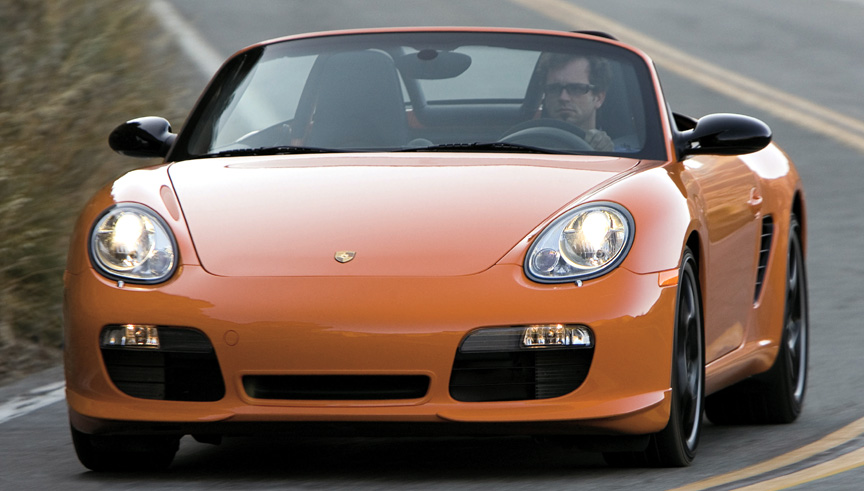
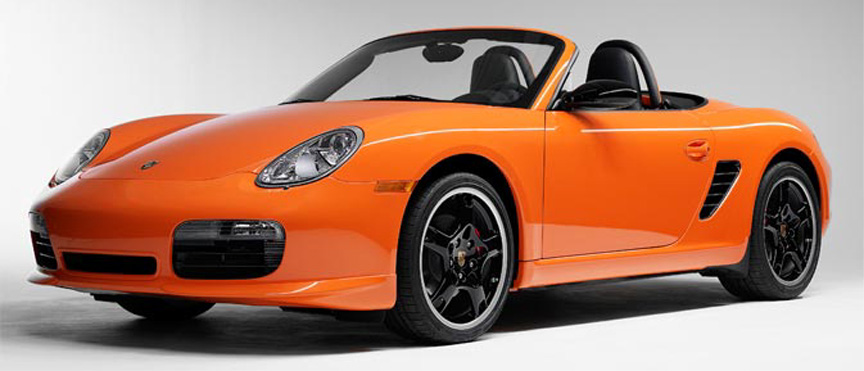

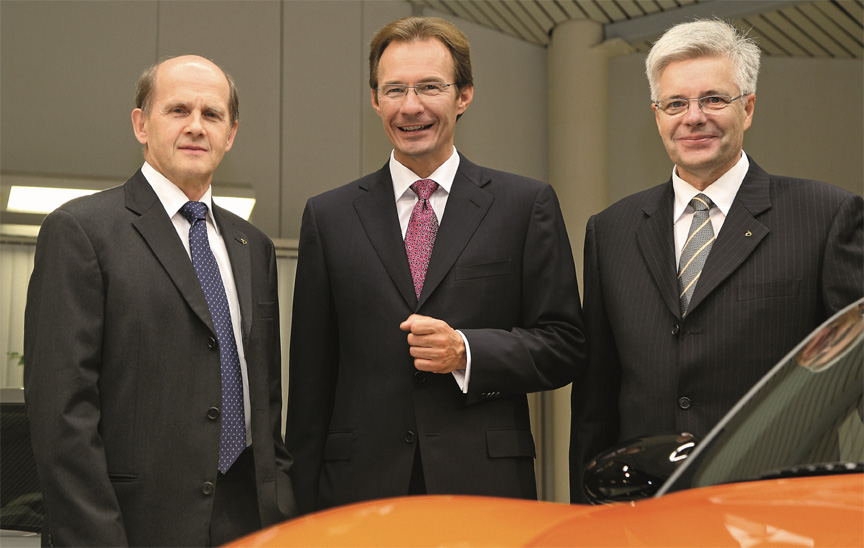
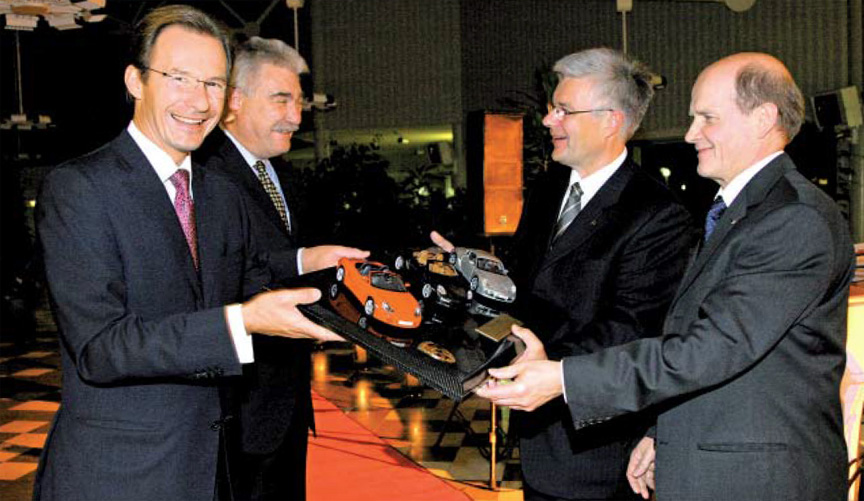
Michael Macht, Executive Vice President of Production and Logistics of Porsche AG, expressed the satisfaction: ”In the past ten years Porsche and Valmet have come a long way together. And we are absolutely aware of the fact that Valmet made a decisive contribution to Porsche’s great development in the 90’s. /–/ I also see the ramp-up of the Cayman as an example of successful cooperation. I hardly believe that anybody will be able in the foreseeable future to build a car rocketing up from zero to No 1 in the J D Power study virtually overnight.”
Boxster S ‘RS 60 Spyder Edition’
It was presented on December 7, 2007 at the Bologna Motor Show, to be built in the series of 1960 cars. Although the reason for this limited edition is not really justified – it doesn’t have anything to do with the 718 RS 60 Spyder racing car -, this is the most beautiful 987.1. The sports exhaust system was always optionally available, but its 6 kW power gain was never announced before the 223 kW RS 60 Spyder Edition. The exterior paint was the nice darker shade of silver from the Carrera GT, the interior was either available in red (with red roof) or dark gray (with black roof).
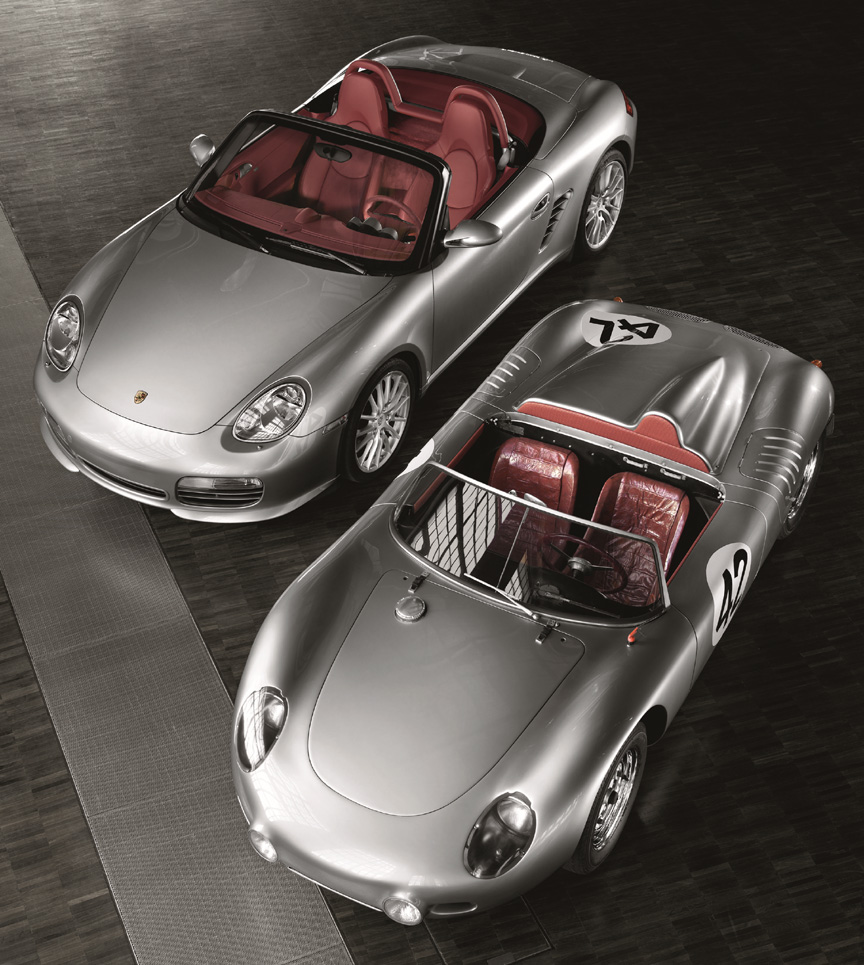
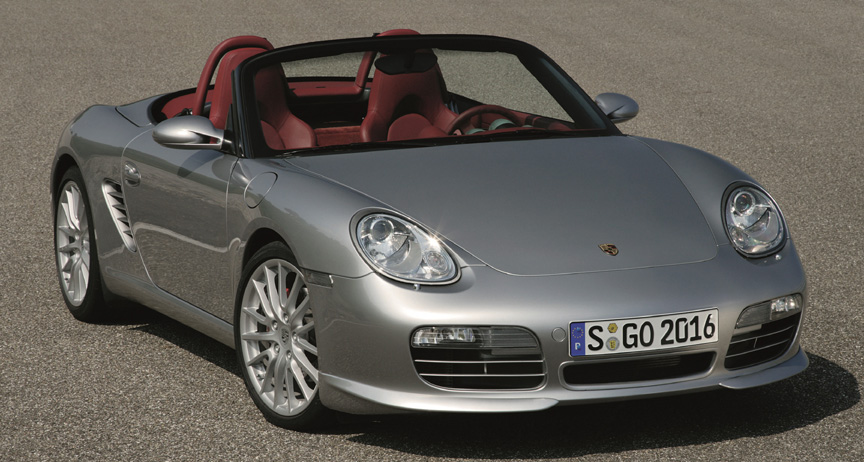

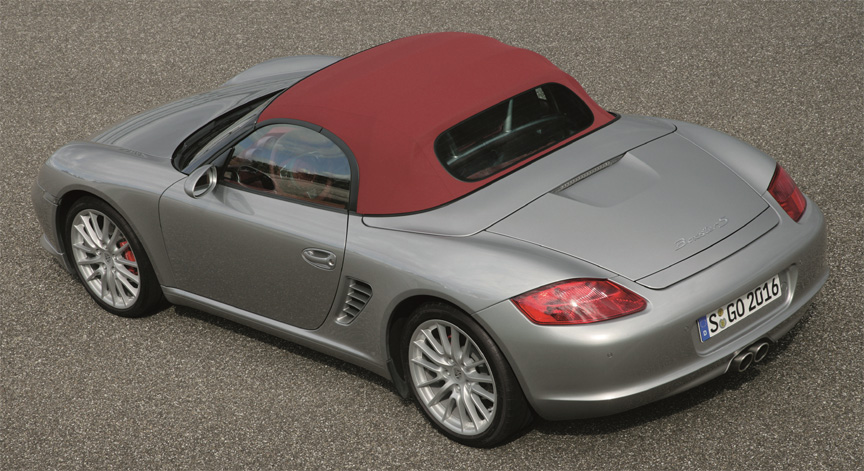
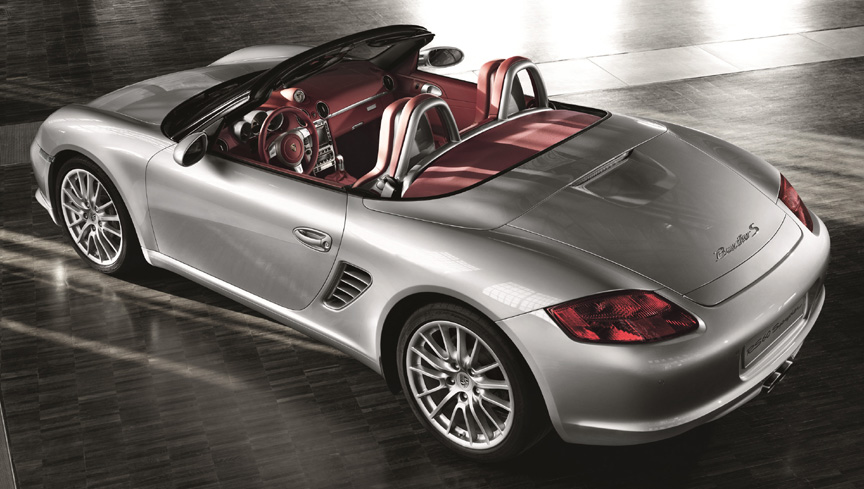
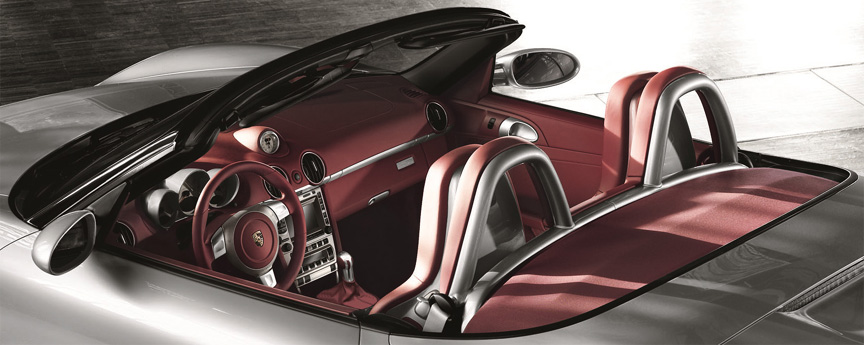
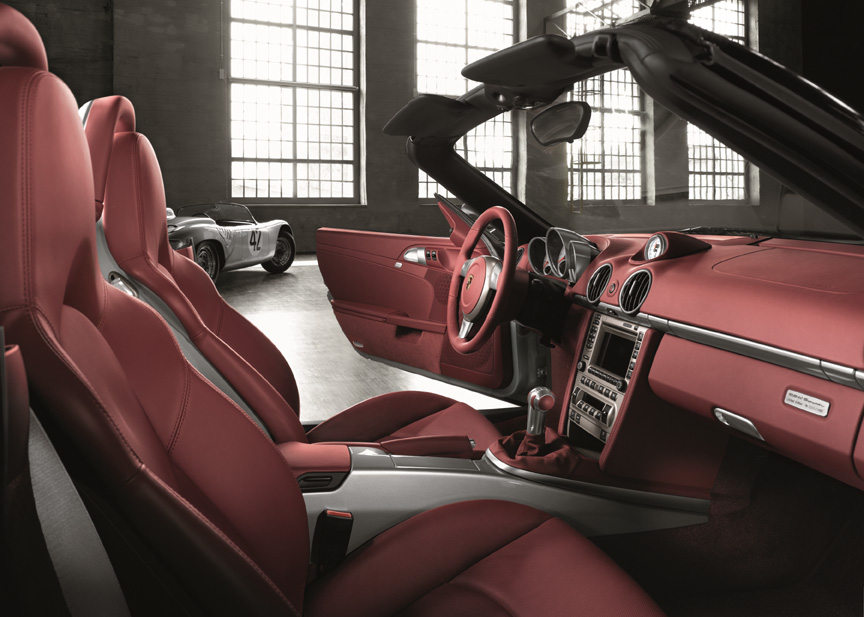
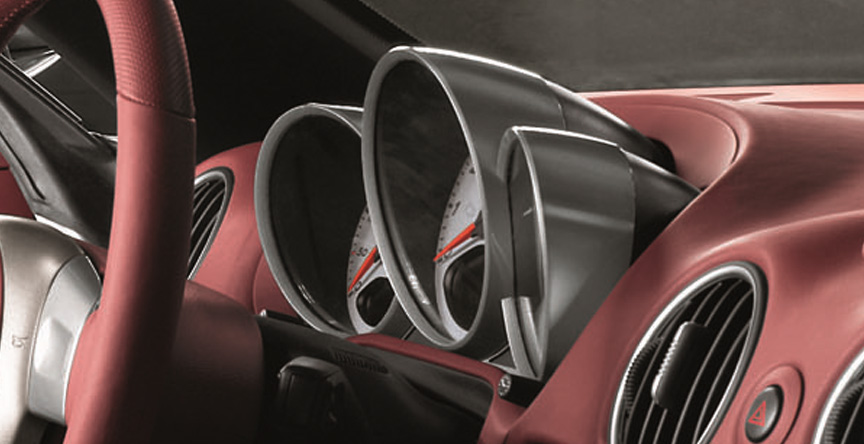
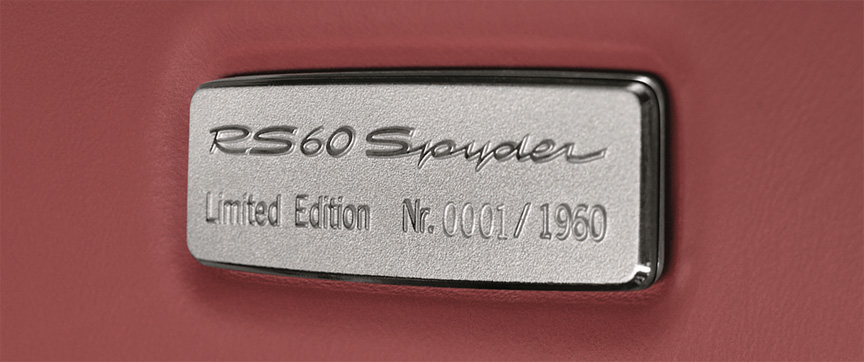
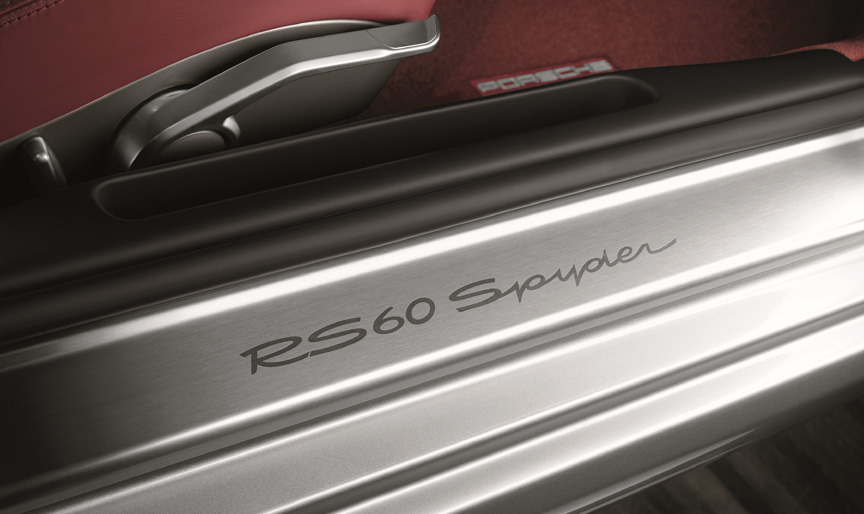
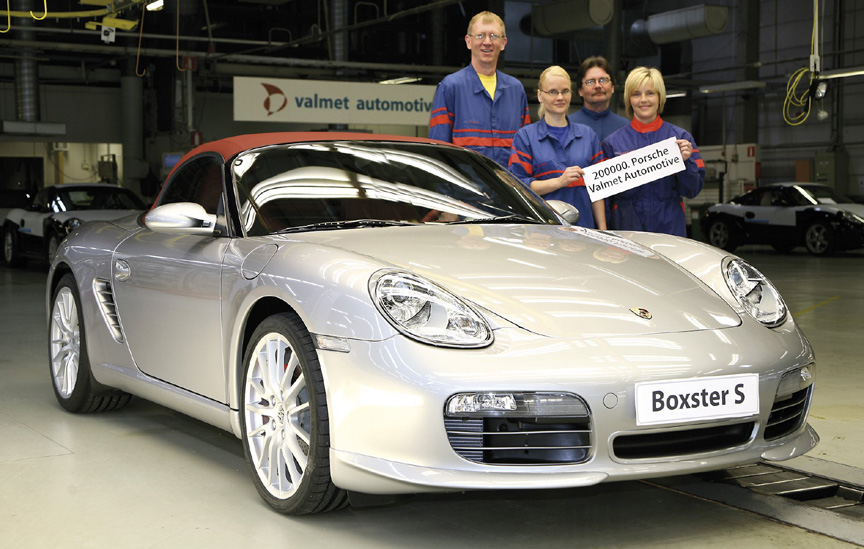
Boxster S ‘Porsche Design Edition 2’
The production of the 987.1 is nearing its end in September 2008 and one last limited edition is made, the Porsche Design Edition 2 (PDE 1 was offered for Cayman and PDE3 for Cayenne). The press release called it “very special Boxster S”, but it is just a white Boxster S with sports exhaust, a few parts painted white (usual Porsche options) and with PDE2 decals applied to the car.
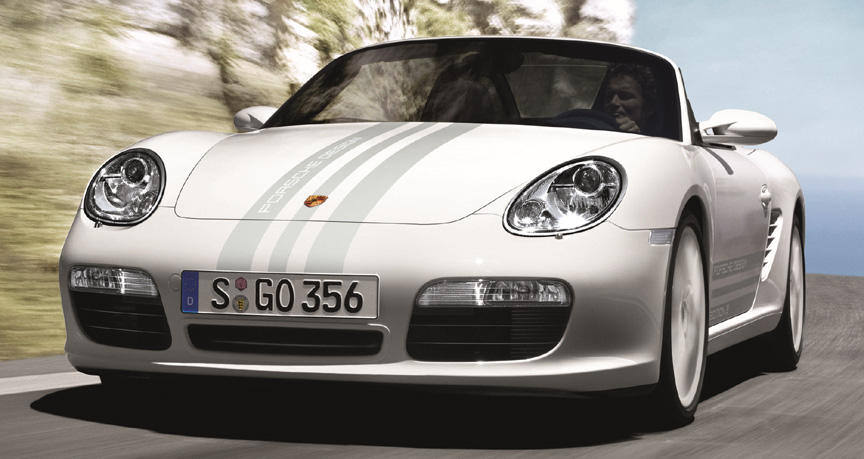
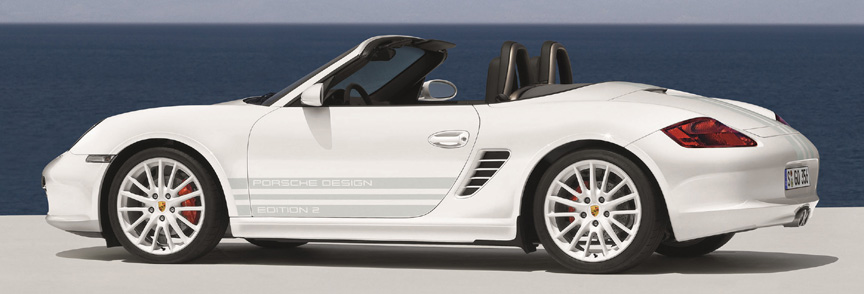

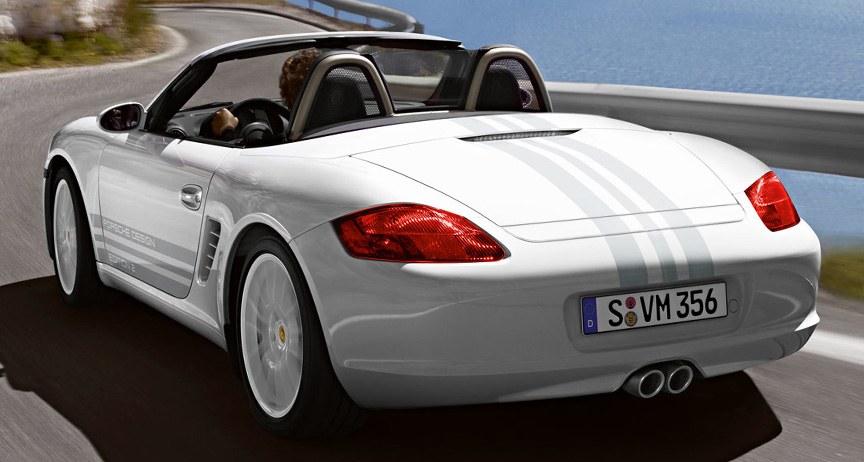
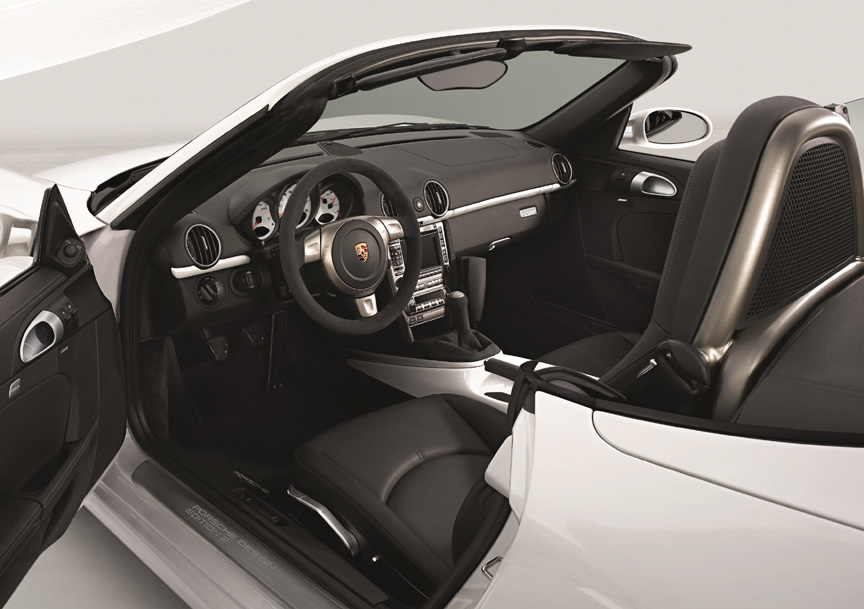
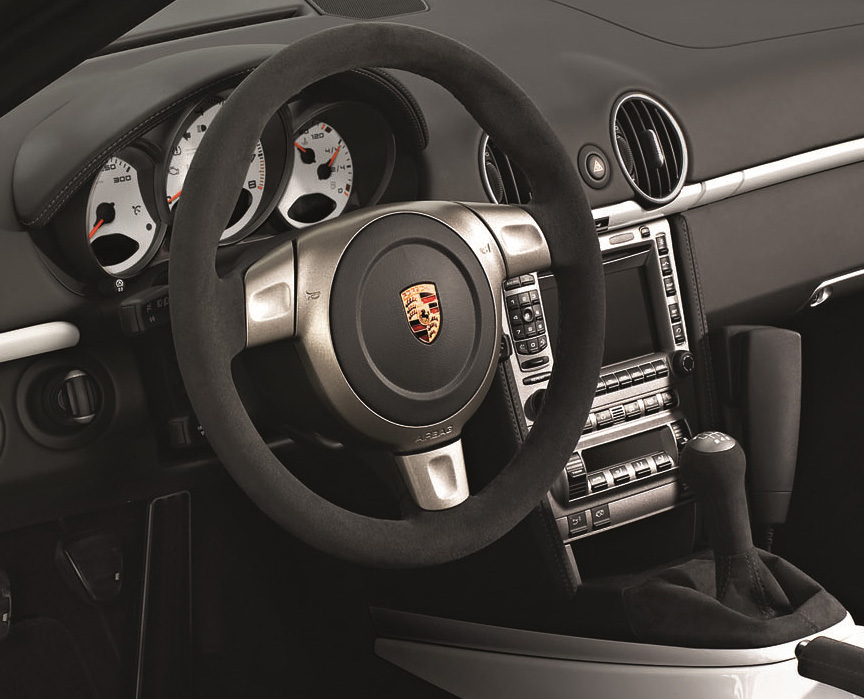
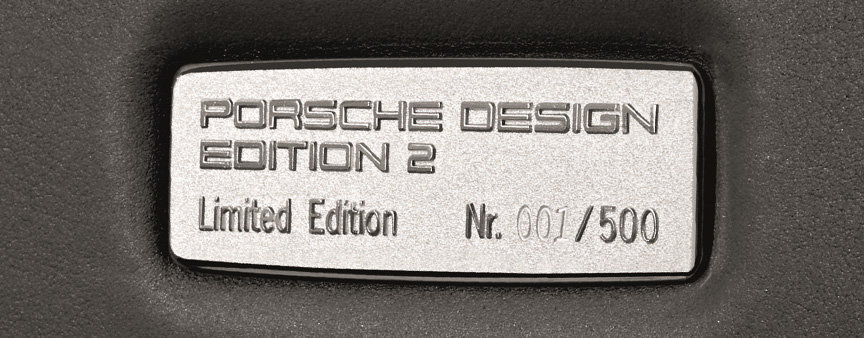
Boxster 987.2 (2009 – 2012)
Official photos: 2008 November 18 / Premiere: 2008 November 19 at Los Angeles Auto Show / Market launch: 2009 February
Considering the technical and visual change of the Boxster from 987.1-generation to 987.2, it was extensive enough not to call it a “facelift”. The 987.2 looks really good, only the rear lamps are questionable. The base version got 0.5″ wider standard wheels (17″). For the first time in Boxster history the brake discs have the same diameter on the Boxster and the Boxster S. The difference is in rear disc thickness and in caliper color – black for the 2.9-litre and red for the 3.4-litre version. The PSM Porsche Stability Management was developed further. When the driver lets go of the gas pedal very quickly – which is typical of an upcoming emergency braking – the PSM builds up a level of brake pressure before the driver’s foot lands on the brake pedal, moving the brake pads slightly towards the discs for immediate action. This shortens the stopping distance. A new option was the seat ventilation (for both the standard seats and the fully electric seats).
DFI engines
New engines were constructed – now with DFI Direct Fuel Injection. The base model got a 2.9-litre flat-6 instead of the 2.7-litre. In the DFI engine inlet valves control only the air flow into the combustion chambers and gasoline is injected directly into the cylinders which provides better efficiency (lower CO2 emissions). Another improvement was the integrated dry-sump lubrication system. The 986/987.1 wet sump engines were vulnerable to lateral forces (among other design flaws they had). The DFI Boxsters got the power and torque rise, but it wasn’t very significant. The 3436 cc DFI engine in the Boxster S was set to produce 228 kW @ 6400 rpm. Less than 3 years later, the same engine was used in the 911 991 Carrera where its power was not governed by marketing strategies and it could pump out 257 kW @7400 rpm.
PDK 7-speed transmission and Sport Plus mode
The earlier 5-speed Tiptronic automatic gearbox was replaced with 10 kg/22 lb lighter 7-speed PDK double-clutch gearbox. PDK stands for Porsche DoppelKupplung (Porsche Double Clutch). The 7th speed is for lowering the CO2 emissions. For the top speed, the 6th gear must be used. While the PDK didn’t bring any benefits for the city drivers (theorethically Tiptronic might even act smoother), the PDK in Sport Plus mode excels on the race track. The Sport Plus race track mode and the Launch Control are part of the optional Sport Chrono package. The cars fitted with Sport Chrono pack can be idenitifed by the stopwatch on the dashboard. While the Sport Chrono pack is a must for a PDK-equipped track day car, the stopwatch on the dashboard is completely useless, an obstruction. While the earlier Tiptronic automatic was awful for track day use, PDK in Sport Plus mode makes an average driver perform really well on the track day. The Launch Control function in the Sport Chrono pack provides maximum acceleration from a standing start. To activate the Launch Control function, Sport Plus mode must be on, brake pedal must be fully depressed and then accelerator pedal must be fully depressed. The engine revs to 6500 rpm, the clutch closes slightly and the message ‘Launch Control ’ appears in the display on the PDK steering wheel. Now, the driver has to release the brake pedal quickly in order to minimally wear the clutch. On the paper the cars with PDK and Launch Control seem to accelerate better than the manual gearbox cars, but the times are ET (elapsed time), which does not include preparation time and in real life street race manual gearbox cars have better chances to win the drag race. The feeling of skillfully operating a manual gearbox Porsche sportscar is something that will probably remain the biggest part of the unforgettable Porsche experience.
Hill-start assist
Standard for all cars and not depending on the transmission type, the system assists the driver in making a smooth start on an incline. If the gear is engaged, the brake pressure is maintained 2 seconds after the footbrake is released. The vehicle is therefore temporarily prevented from rolling backwards. Brake pressure is reduced if sufficient revs have been generated.
Boxster Spyder
Black Edition
Black Edition is not anything special. It was a last model year offering, basically an equipment package consisting of typical options (bi-xenon lights with dynamic cornering lights, automatic AC, cruise control, navigation system, bluetooth, Sound Package Plus, audio interface, anti-dazzle mirrors, rain sensor, wind deflector, 19″ wheels). Visually the Black Edition cars can be identified by everything in black: the body, roof, Boxster Spyder wheels, model lettering, exhaust pipes, roll-over bars, dashboard trim strip etc.
